http://www.mmdtkw.org/ALRIAncRomUnit1Slides.html

Images
for ALRI
Ancient Rome Unit 1
Approaching
Rome
Click on images or internet addresses for larger images
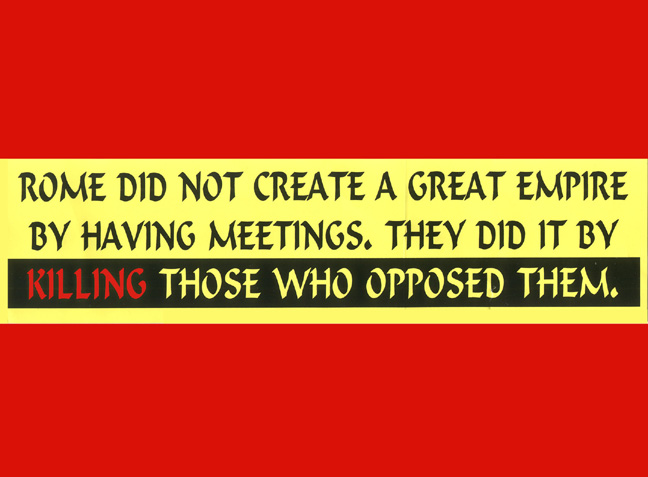

http://www.mmdtkw.org/AU01000RomeDidNot.jpg
http://www.mmdtkw.org/AU01000ToAvoid2.jpg
Rome
conquered and assimilated its neighbors, and the process
worked for
them for almost 1000 years.
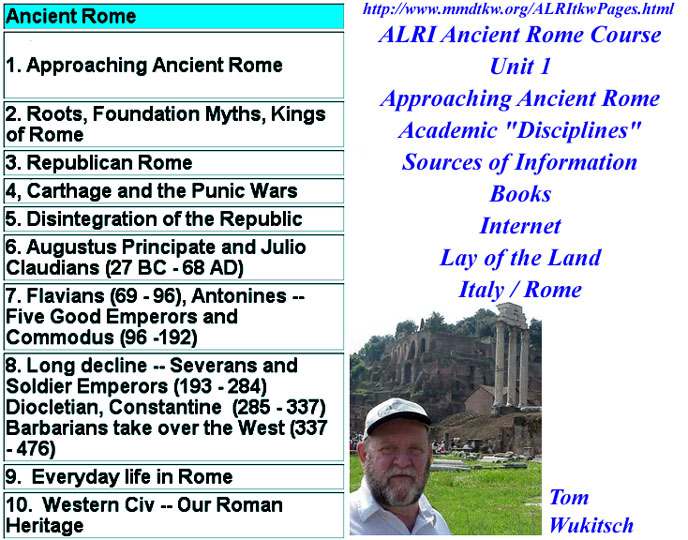
http://www.mmdtkw.org/AU01000UnitOne.jpg
Click on the image or link to see a list of all ten course
unit topics.
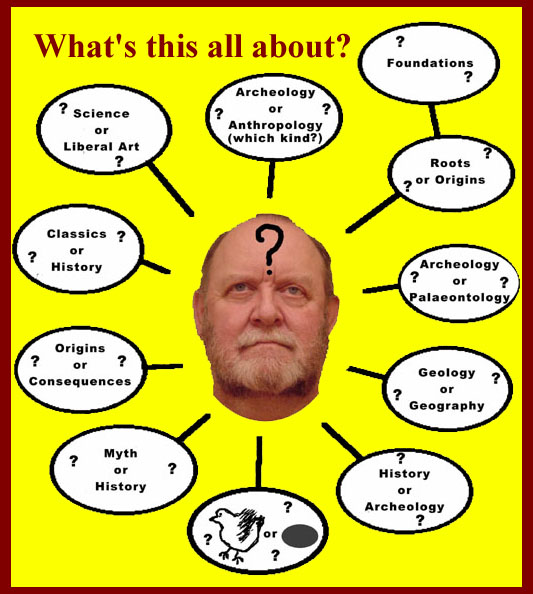
http://www.mmdtkw.org/AU0100BigBubbleChart.jpg
What are we doing in this course?
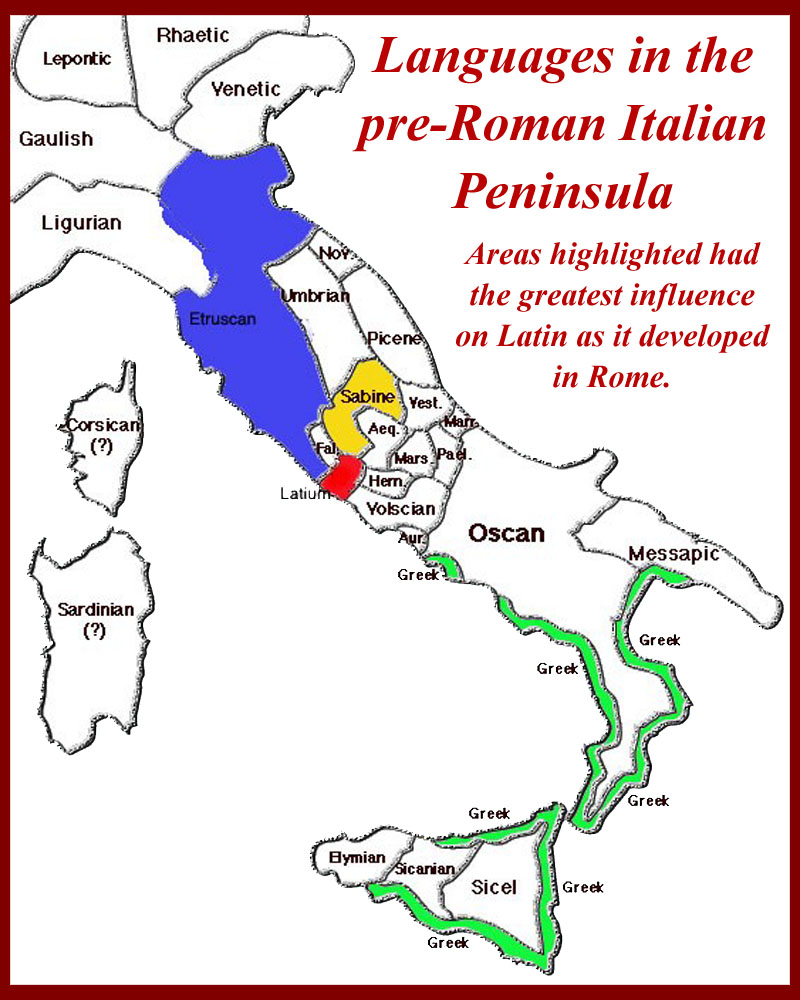
http://www.mmdtkw.org/AU0100VTLmap.jpg
Before Rome was Rome, the Italian peninsula was divided
among several
language groups, some of which contributed to the
development of
Latin. Latin took its name from the tribes of
Latium, the area
which contains Rome.
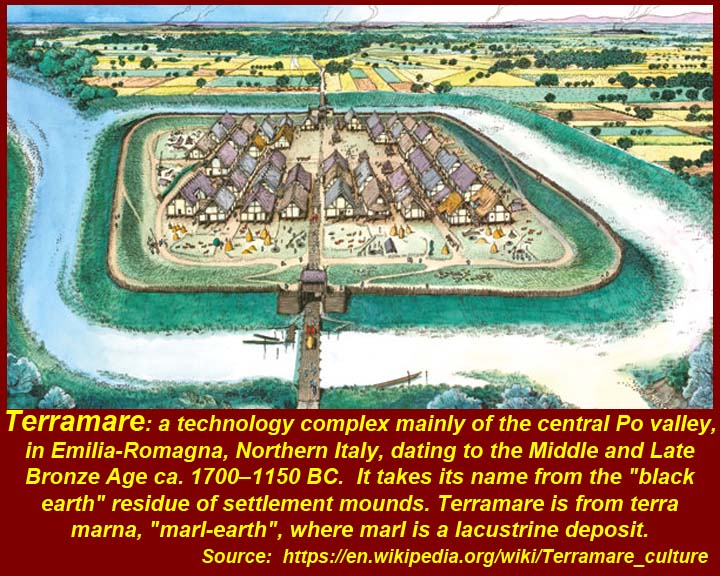
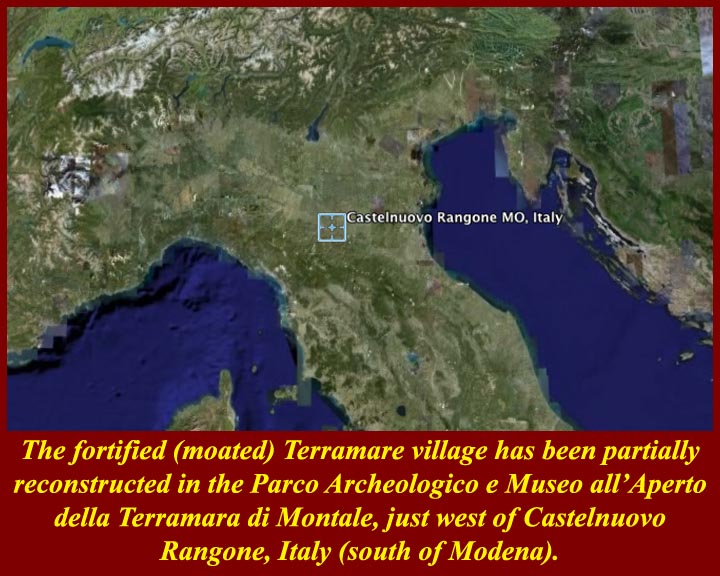
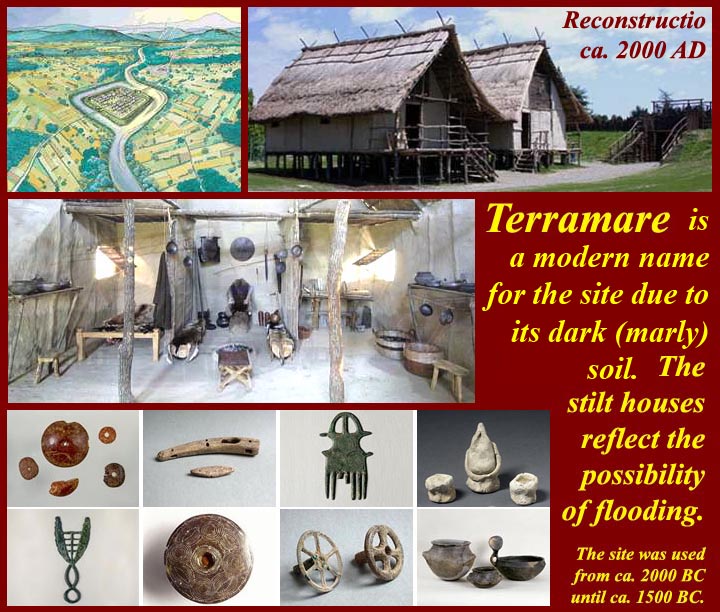
http://www.mmdtkw.org/AU0101aTerramare1500BC.jpg
http://www.mmdtkw.org/AU0101bTerramaraLocator.jpg
http://www.mmdtkw.org/AU0101cTerramare1.jpg
The bronze age terramare culture in northern Italy has
often been
considered the first well organized urban culture in
Italy. The
Terramare town was planned on a basis similar to later
Etruscan and
Roman fortress towns.
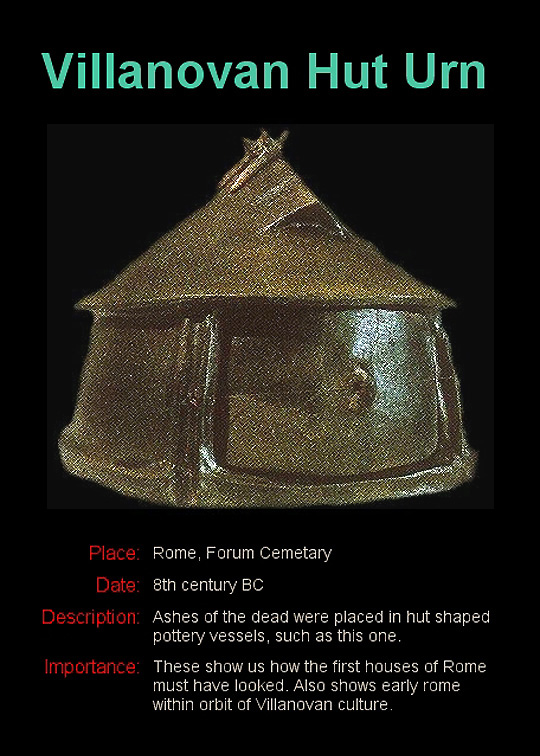
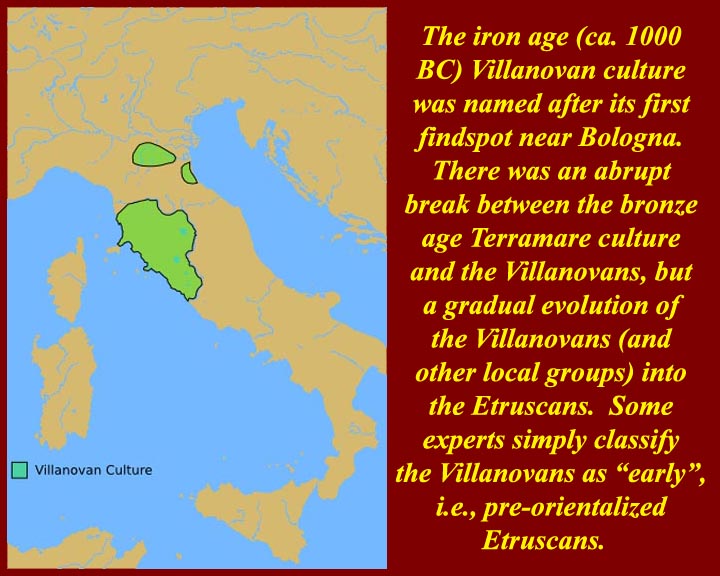
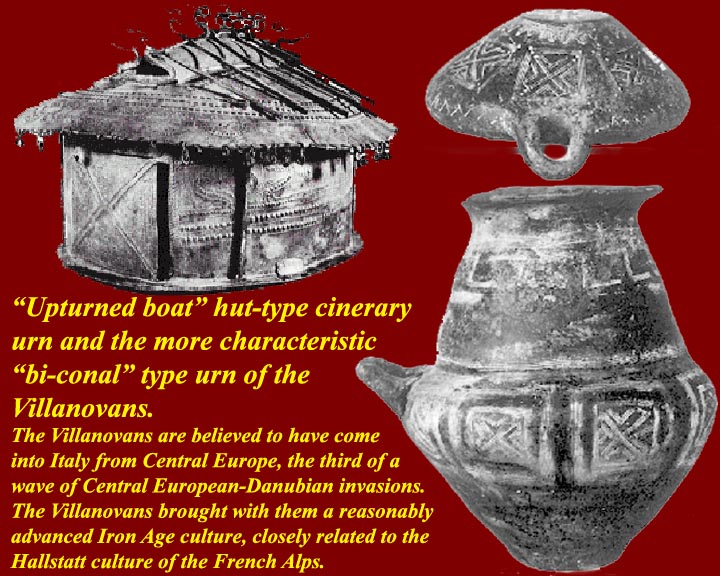
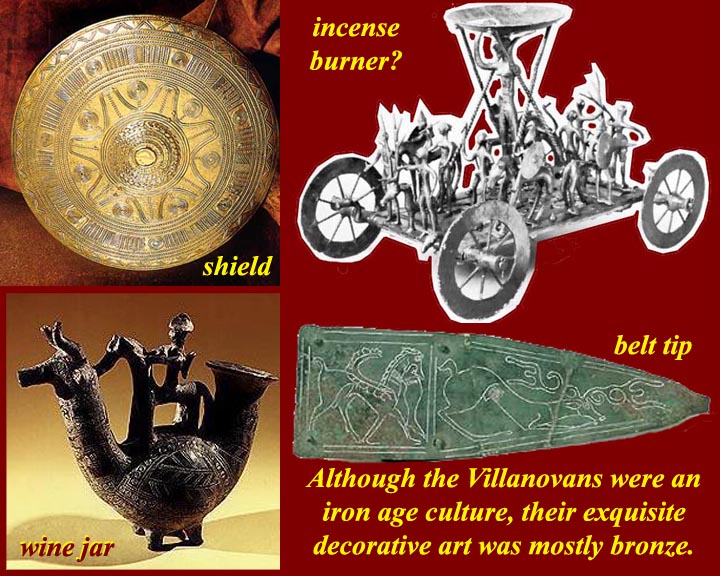
http://www.mmdtkw.org/AU0102aVillaNovanHutUrn.jpg
http://www.mmdtkw.org/AU0102bVillanovaMap.jpg
http://www.mmdtkw.org/AU0102cVillanovaOssuary.jpg
http://www.mmdtkw.org/AU0102dVillanovanDecoArt.jpg
The iron age Villanovan culture displaced the Terramare
culture.
The Villanovans appeared as the third wave of trans-Alpine
arrivals and
have much in common with the Hallstatt culture of the
French
Alps. "Ages" (like "stone", "copper", "bronze", and
"iron") are
named for the materials used to make tools and
weapons. The
artifacts in the third image, above, are bronze, but they
were
probably made using iron tools. Some experts
consider the
Villanovan to be an early stage of the Etruscan culture.
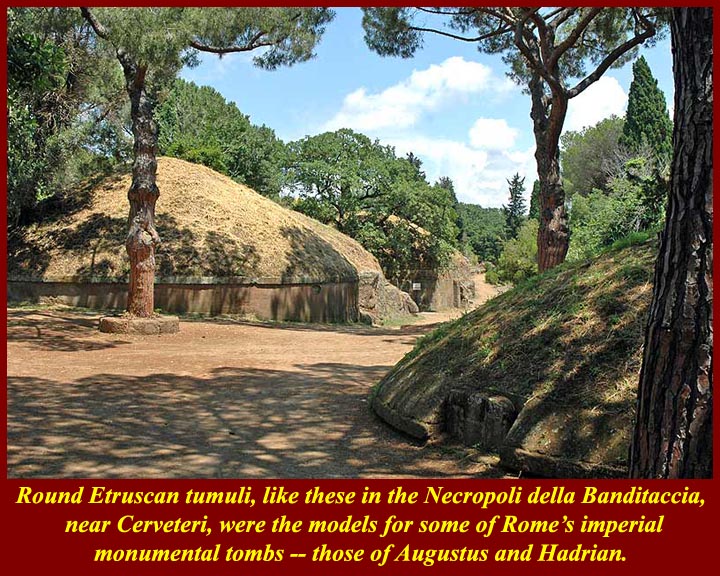
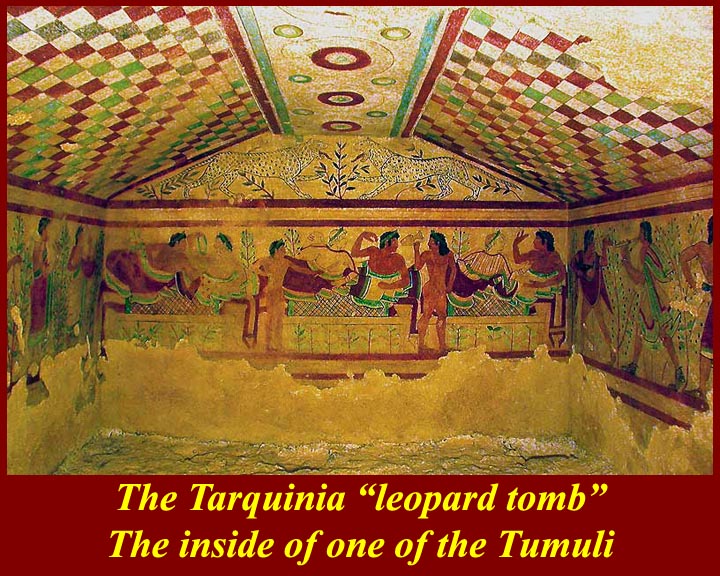
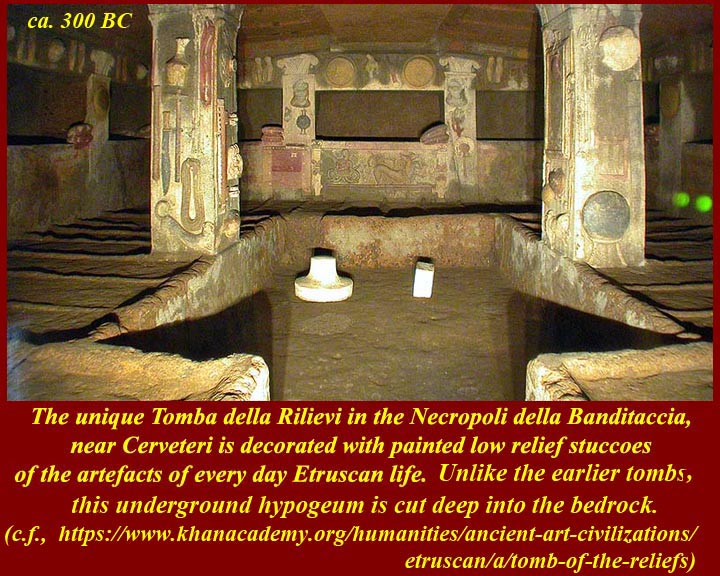
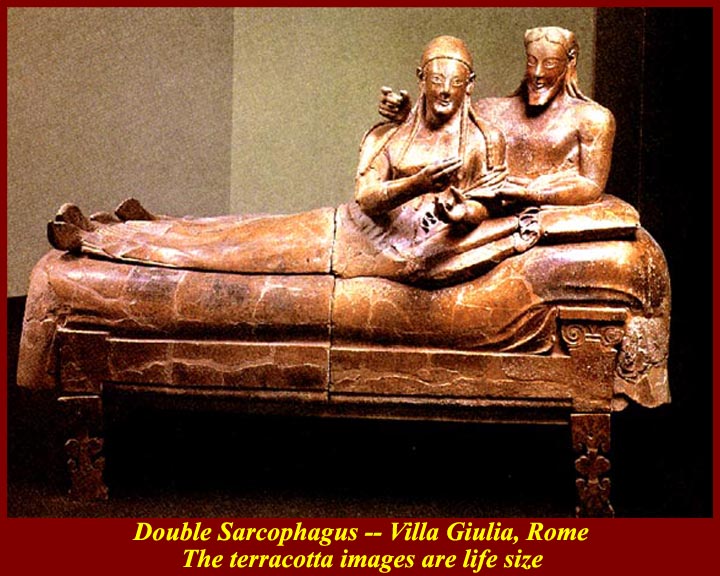
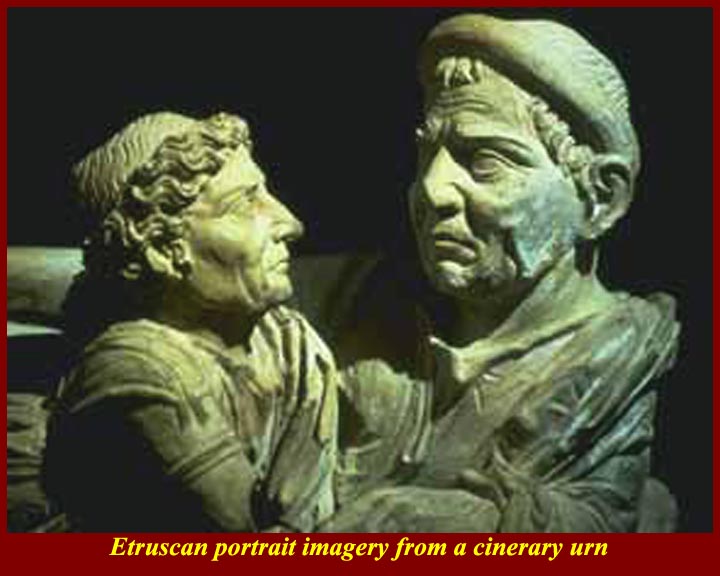
http://www.mmdtkw.org/AU0103aCervereriTumuli.jpg
http://www.mmdtkw.org/AU0103bTarquiniaLeapardTomb.jpg
http://www.mmdtkw.org/AU0103cHousewaresTomb.jpg
http://www.mmdtkw.org/AU0103dSarcophagusCerveteri.jpg
http://www.mmdtkw.org/AU0103eCineraryPortrait.jpg
The vast majority of the
remains of the Etruscan civilization were found in Etruscan
tombs. The Romans destroyed or overbuilt most of their
cities. Nonetheless, we know a great deal about how
the upper
levels of their society lived because of what was left in
their
tombs. The main repositories for Etruscan grave goods
are the
Vatican Etruscan Museum and the National Etruscan Museum in the Villa Giulia in
Rome. There
are also smaller museums at some of the Etruscan
archeological sites in
Italy.
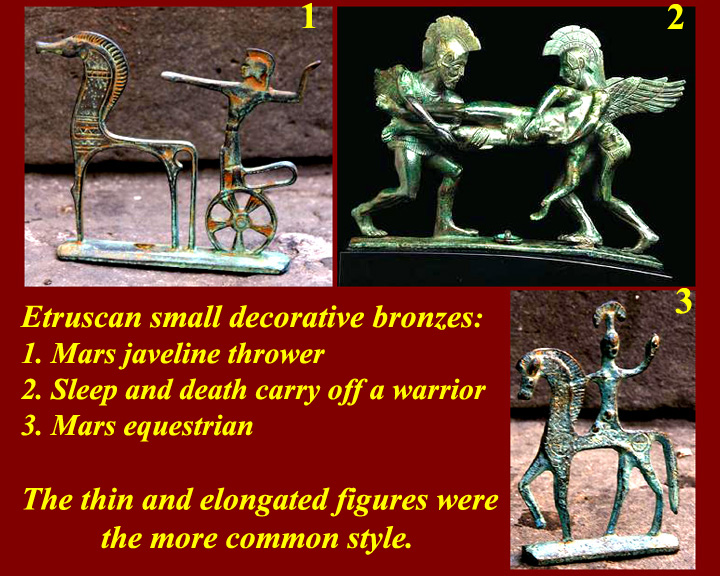
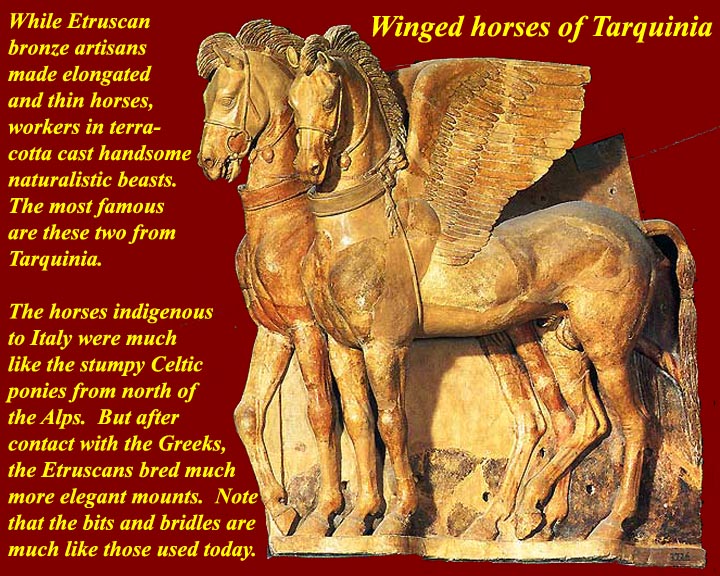
http://www.mmdtkw.org/AU0103fAttenuateBronzes.jpg
http://www.mmdtkw.org/AU0103gTerracottaHorses.jpg
Etruscan bronze art tended to
be stylized
with attenuated figures of people and animals.
Terracotta
artwork, on the other hand, was very naturalistic as seen
in the winged
horses in the second image and in the funerary terracottas
above.
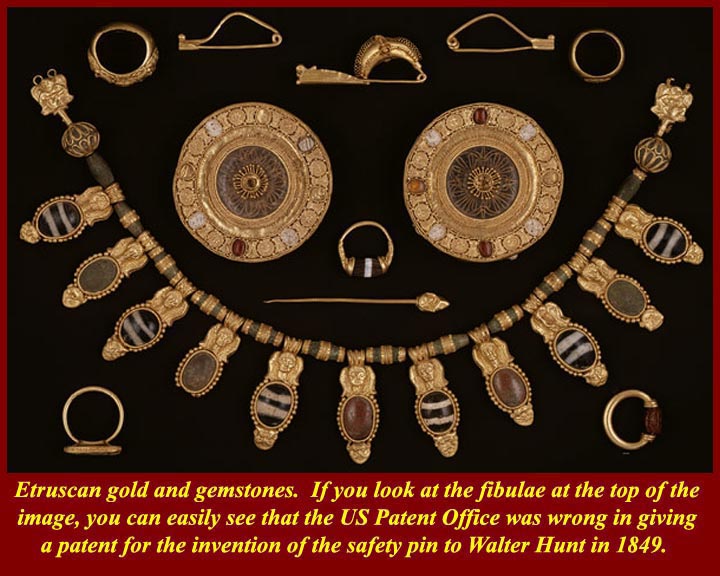
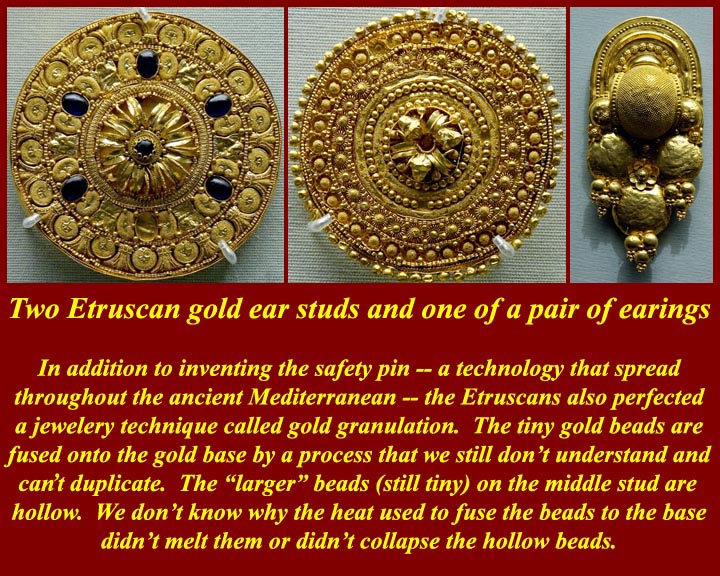
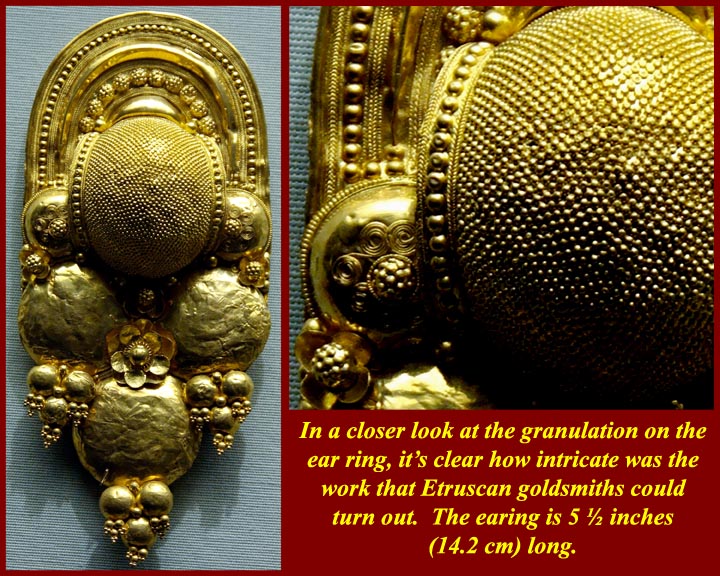
http://www.mmdtkw.org/AU0103hEtruscanJewelery.jpg
http://www.mmdtkw.org/AU0103iGoldGranulation1.jpg
http://www.mmdtkw.org/AU0103jGoldGranulation2.jpg
The Etruscans were justly famed for their gold jewelery
and
particularly for the intricacy of their gold granulation.
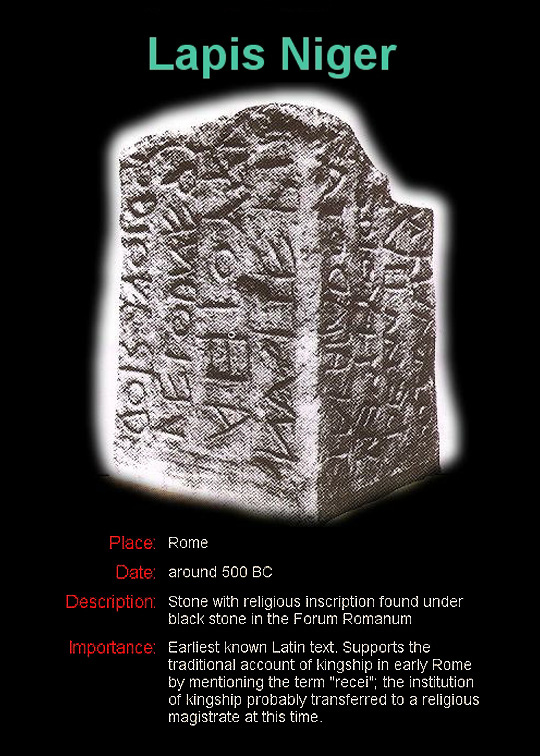
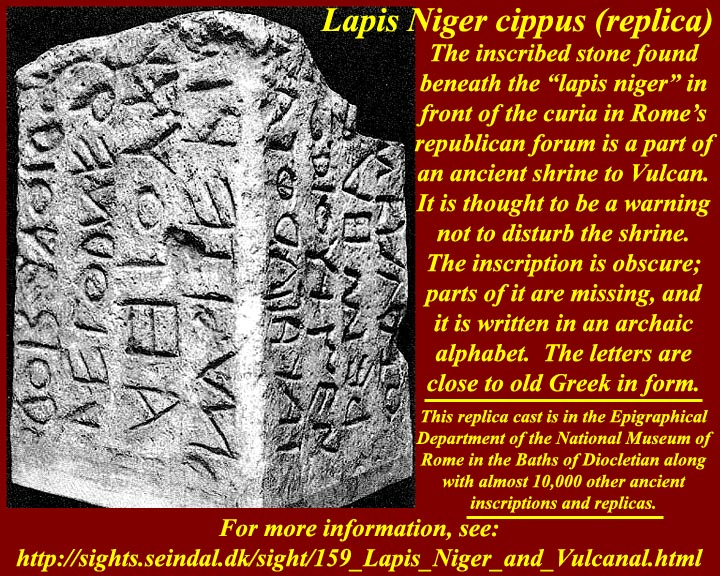
http://www.mmdtkw.org/AU0104aLapisNiger.jpg
http://www.mmdtkw.org/AU0104bLapisNigeCippus.jpg
The Lapis Niger cippus is under the black stone surface in
front of the
Curia in the Roman republican forum. It marks the
site which
ancient Romans venerated as the site of the tomb of
Romulus. The
truncated stone is covered with the oldest known
monumental Latin
inscription. For more information on the Lapis Niger
and the
supposed grave of Romulus, see http://www.youtube.com/watch?v=5SBhchFXlGg
and http://en.wikipedia.org/wiki/Lapis_Niger.
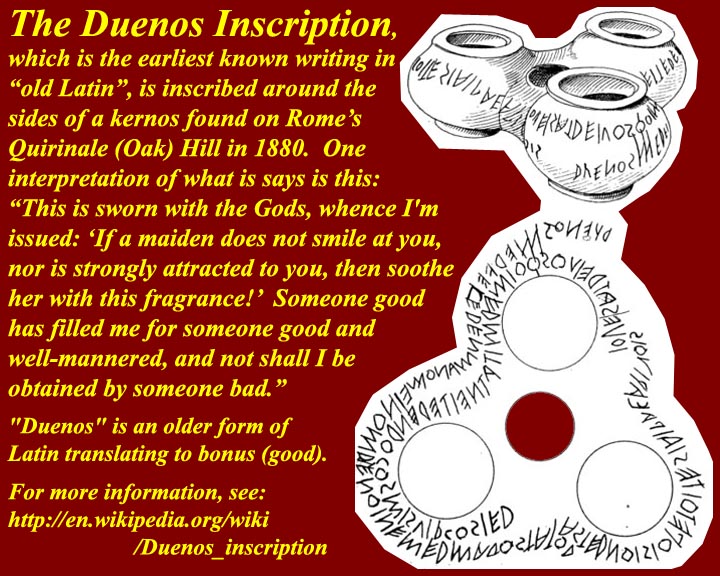
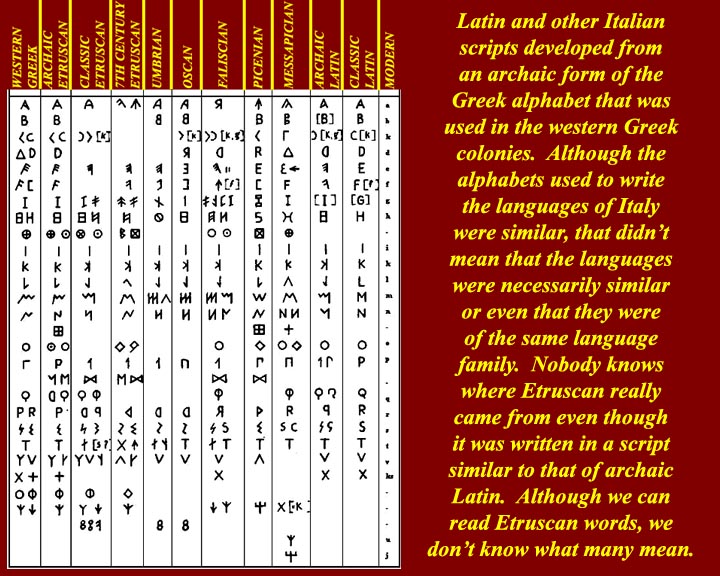
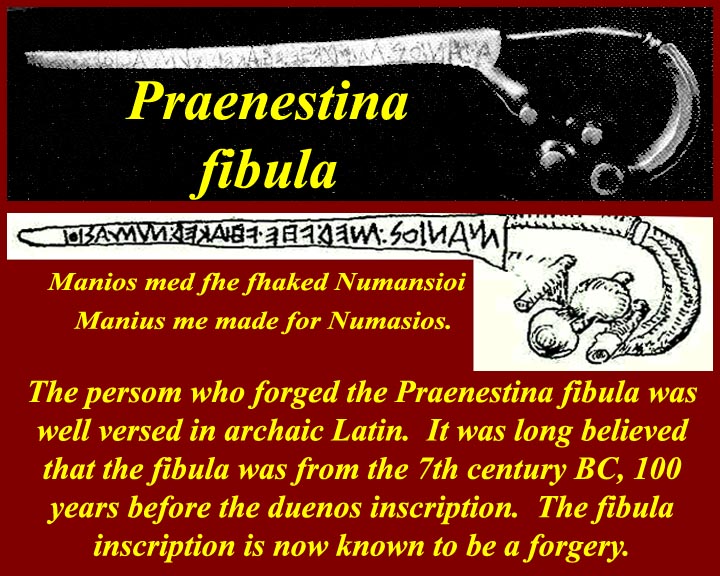
http://www.mmdtkw.org/AU0104cDuenosInscription.jpg
http://www.mmdtkw.org/AU0104dAncientScripts.jpg
http://www.mmdtkw.org/AU0104ePraenstinaForgery.jpg
The earliest known proto-Latin writing is on the "Duenos"
kernos
found on Rome's Quirinale Hill in 1880. A
kernos is a
circular arrangement of vases or jugs (in this case three
jugs) molded
together. Duenos is one of the words in the
inscription and is an
early version of the word bonus = good. The second
image shows
the development of the Latin alphabet, and the third shows
the
Praenestina fibula with its forged inscription. The
fibula may be
older than the Duenos inscription, but the writing on the
fibula is a
later forgery.
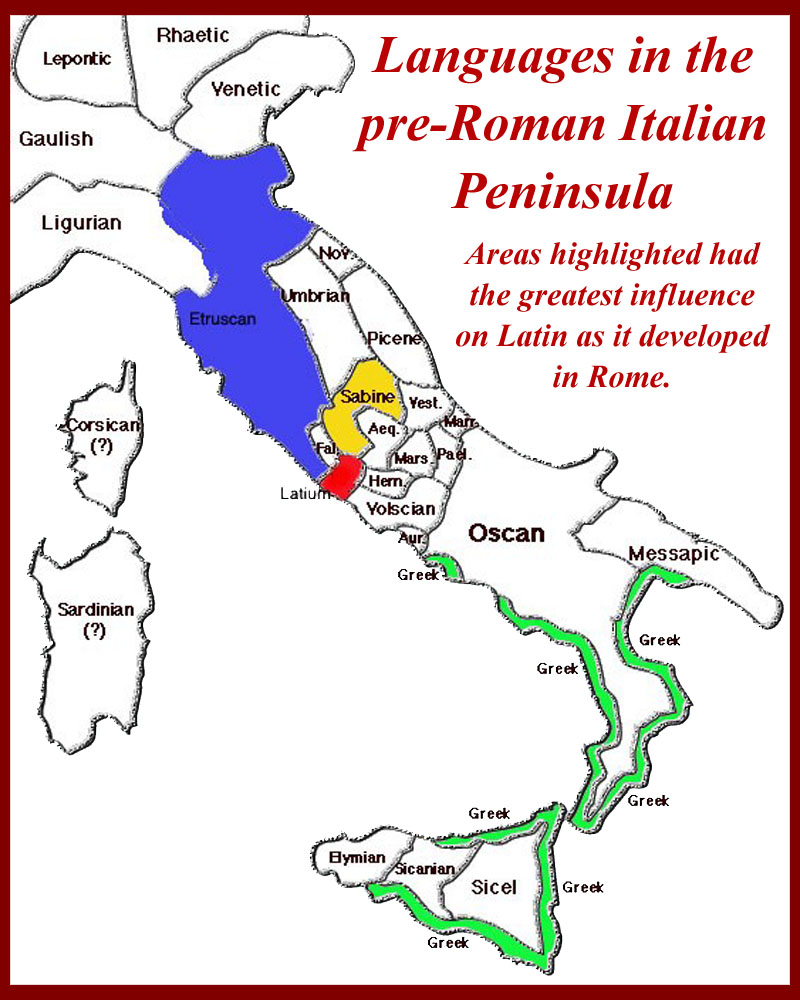
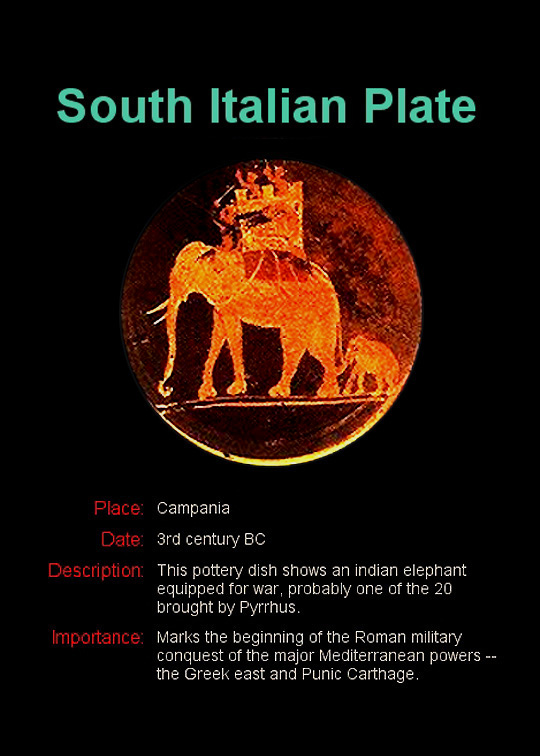
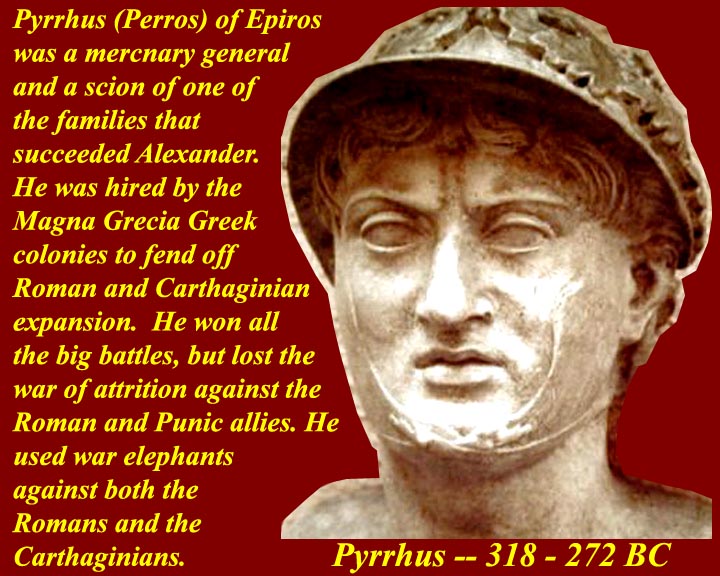
http://www.mmdtkw.org/AU0104fVTLmap.jpg
http://www.mmdtkw.org/AU0105aElephantPlate.jpg
http://www.mmdtkw.org/AU0105bPyrrhus.jpg
In the 4th and 3rd centuries BC
the Greek
colonies on the southern Italian coasts and on Sicily were
threatened
by both the Romans and the Carthaginians (who, at this
point were in a
long standing alliance). The Greeks hired a notable
mercenary
general, Pyrrhus of Epirus, to fight off their predatory
neighbors. Pyrrhus used trained Indian elephants and
won all the
battles, but lost the war because of high casualty rates
among his
forces. The Carthaginians, later used smaller North
African
elephants against the Romans -- war broke out between the
former allies
over possession of the Greek cities on Sicily. The
Romans
eventually won their "Punic" wars against Carthage -- also
by
attrition. The Punic wars are the subject of Unit 4 of
this
course. For more on Pyrrhus, see http://en.wikipedia.org/wiki/Pyrrhus_of_Epirus
and
http://classics.mit.edu/Plutarch/pyrrhus.html
(Plutarch)
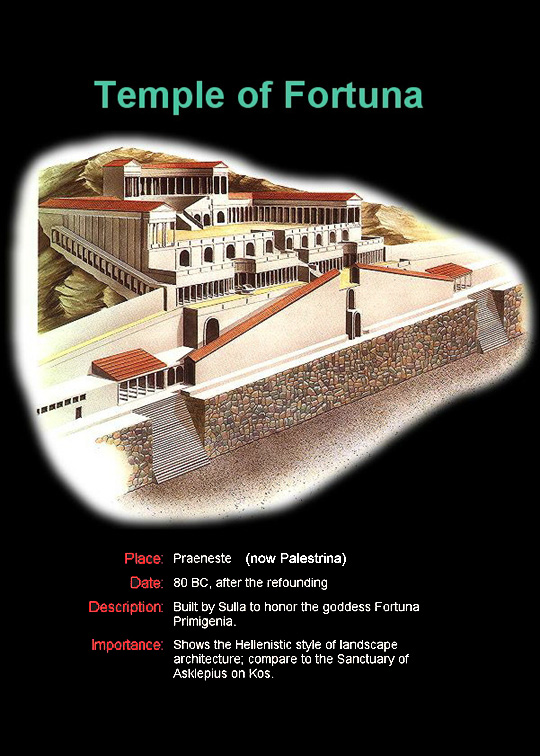
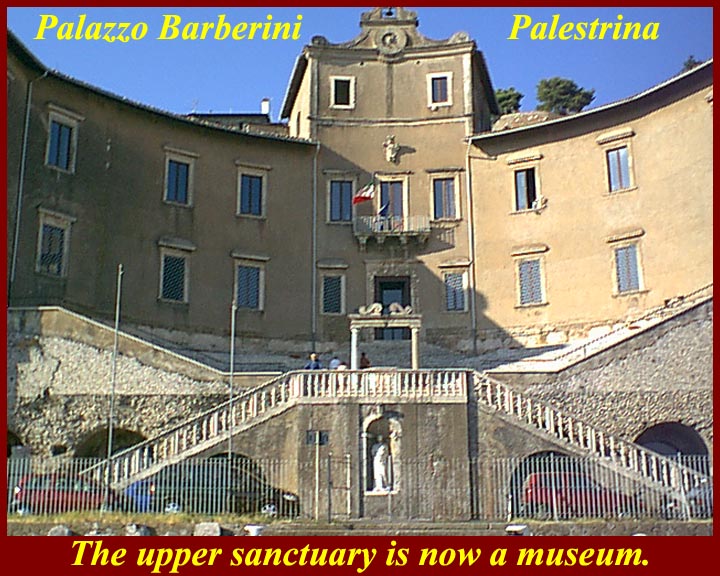
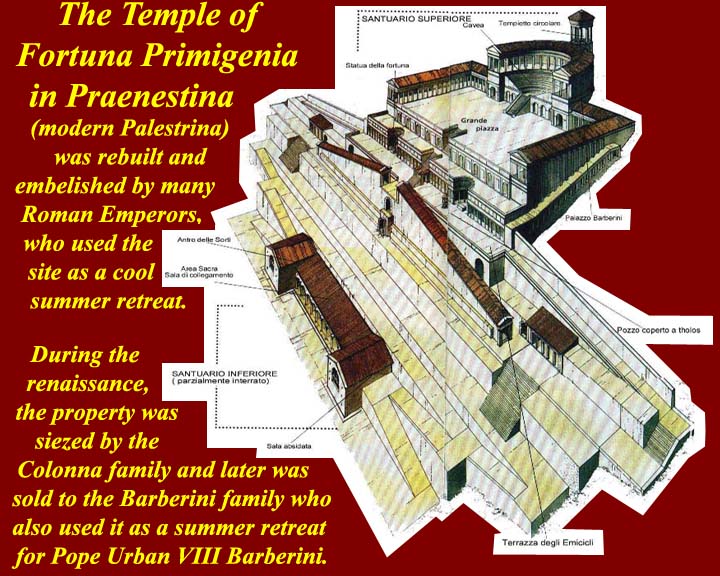
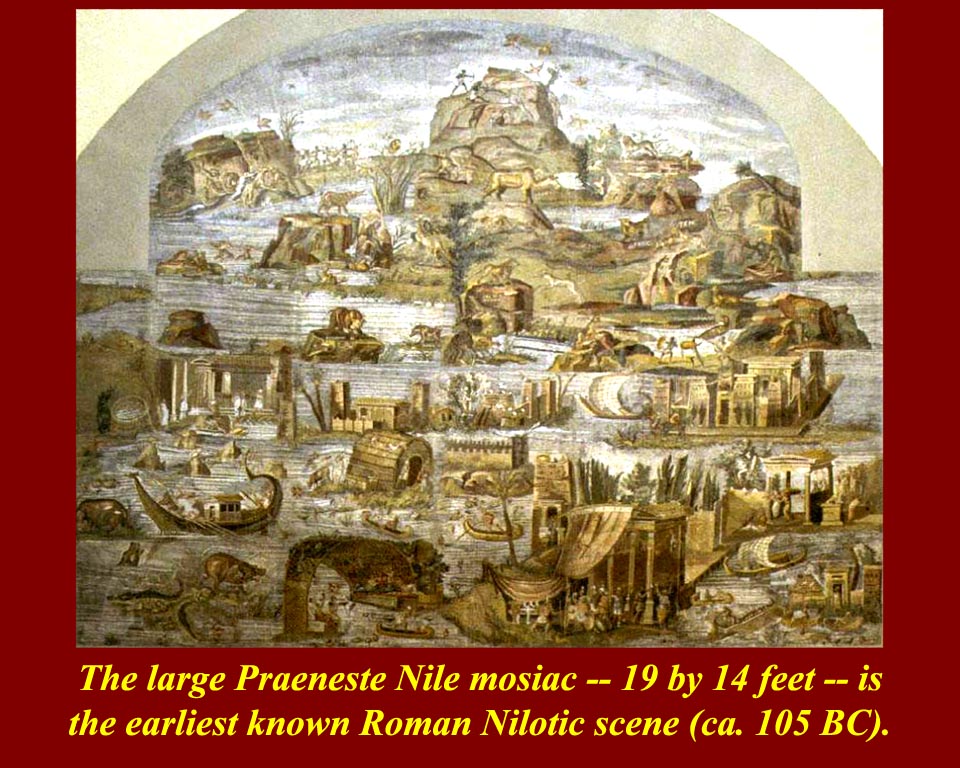
http://www.mmdtkw.org/AU0106aFortunaPraenestina.jpg
http://www.mmdtkw.org/AU0106bPraenestinaFortunaBarberini.jpg
http://www.mmdtkw.org/AU0106cBalazzoBarberiniPalestrina.jpg
http://www.mmdtkw.org/AU0106dNileMosaic.jpg
The ancient temple of Fortuna at Praeneste was rebuilt on
a much
grander scale in 80 BC. The town and temple became a
resort for
the ancient Romans during Rome's imperial phase and the
temple's
architecture was the prototype for many Roman hillside
villas both in
the ancient period and during the renaissance. The
Temple was
eventually seized, during the renaissance, by the Colonna family who
rebuilt it again
as a country house. After several destructions and
rebuildings,
the Colonna sold it to the Barberini family and it became
a "casino"
(summer retreat) for Pope Urban VIII Barberini. The
main
salon of the casino holds the famous "Nile Mosaic",
which the
Barberini had removed to their palazzo in Rome. It
was restored
to Palestrina (Praeneste) in 1953. For more on the Nile
Mosaic, see http://en.wikipedia.org/wiki/Nile_mosaic_of_Palestrina.
For
a Lego version of the Temple (with links to other Lego
ancient
sites) see http://www.ancient-theme.com/1998/olson.html.
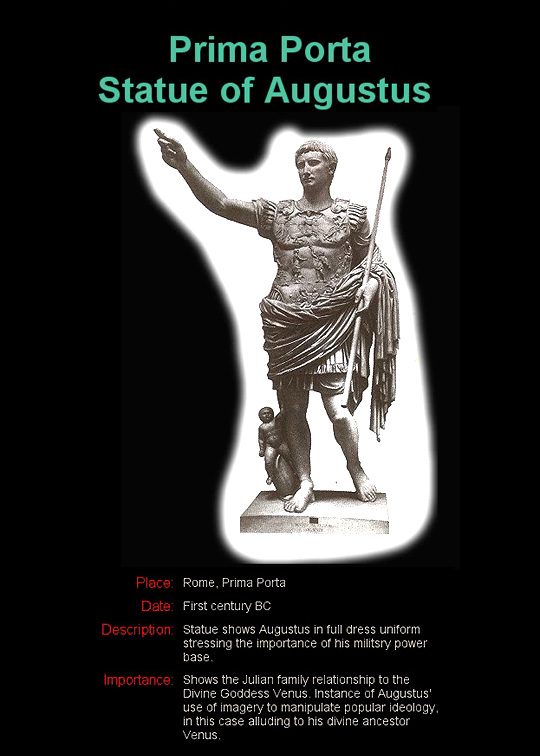
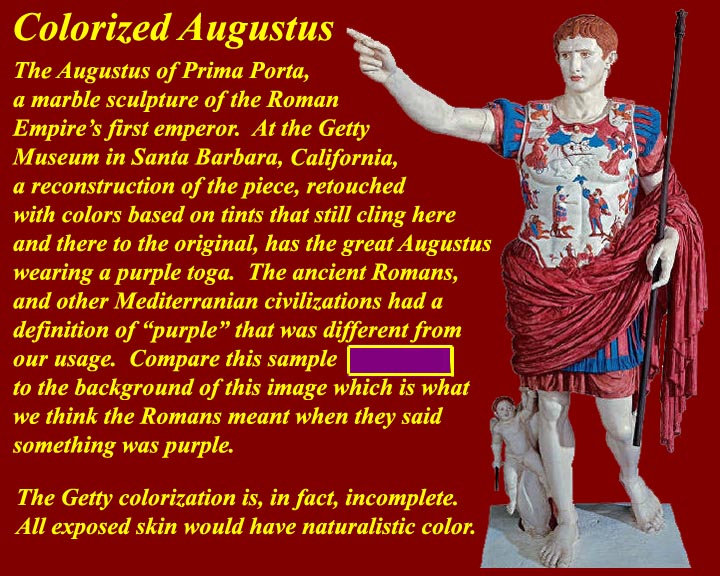
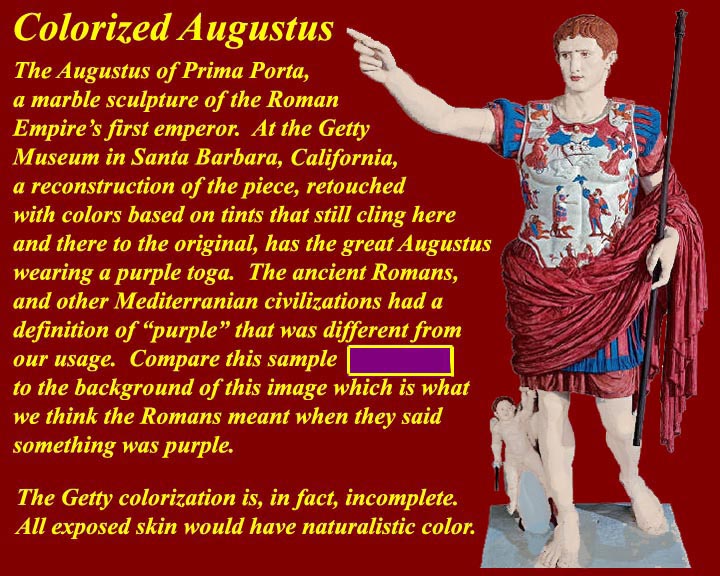
http://www.mmdtkw.org/AU0107aAugustusPrimaPorta.jpg
http://www.mmdtkw.org/AU0107bColorAugustus1.jpg
http://www.mmdtkw.org/AU0107cColorAugustus2.jpg
One of the finest Roman marble portrait statues is that of
Augustus
Caesar, which was discovered on April 20, 1863 in the
Villa of Livia at
Prima Porta, near Rome. His wife Livia Drusilla retired to
the villa
after his death. The sculpture is now displayed in the
Braccio Nuovo of
the Vatican Museums. It is a copy of a bronze (or
gold and
bronze) statue that was erected in Rome by the Senate to
honor
Augustus. Both the metal statue and the marble one
would have
been painted naturalistically. The
second image is
another copy, on display at the Getty Museum in Santa
Barbara
California, which has some of the color restored. In
the third
image I have added flesh tones to the second image to give
an idea of
how the original statue may have looked.
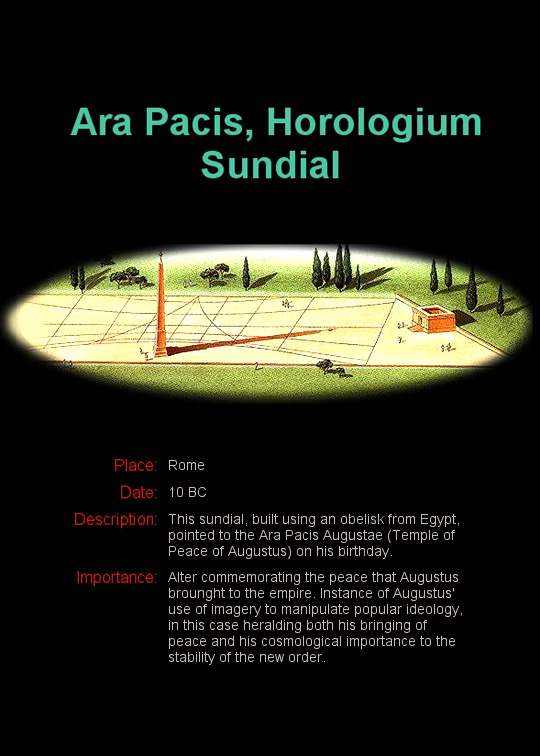
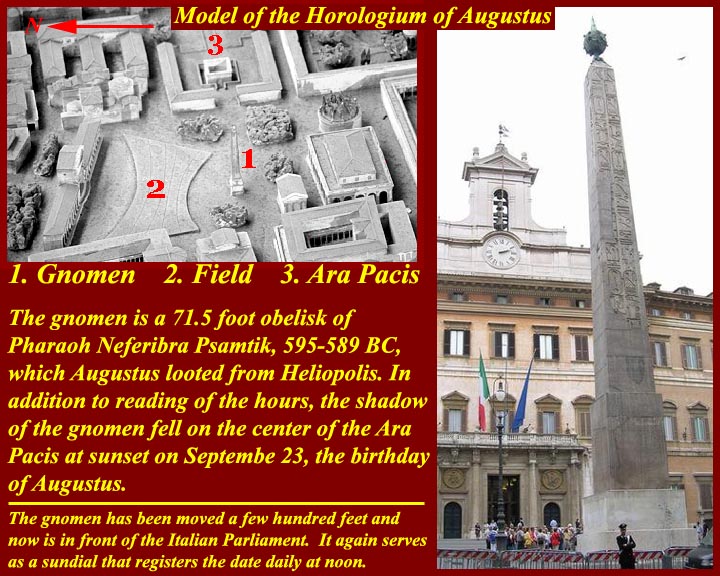
http://www.mmdtkw.org/AU0108aAraPacisHorologium.jpg
http://www.mmdtkw.org/AU0108bHorologiumAugusti.jpg
Part of the spoils of the conquest of Antony and Cleopatra
by Augustus
was a large Egyptian Obelisk looted from Heliopolis. (The
Romans became
great collectors of Egyptian stuff and that's why there
are more
Egyptian obelisks in Rome (13) than remain in Egypt.
Augustus set up
his prize in the Campus Martius as the gnomen of a giant
sundial.
it was arranged so that the shadow of the gnomen fell on
his Ara Pacis
(altar of peace) right at sunset on his birthday,
September 23.
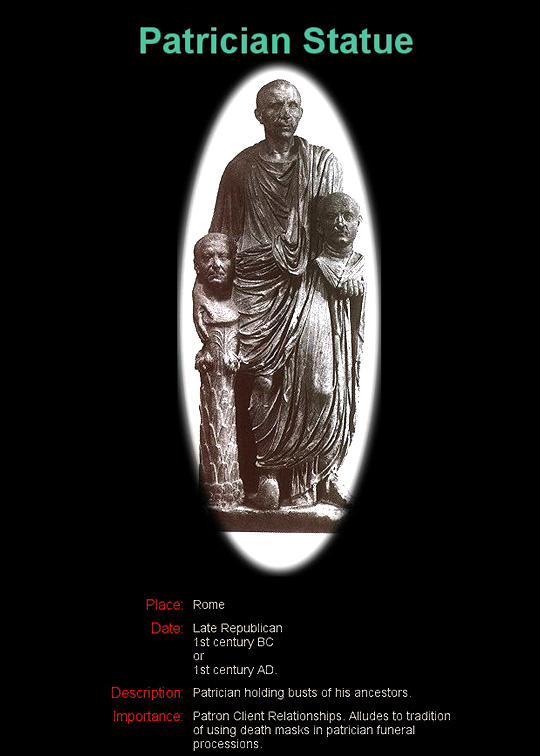
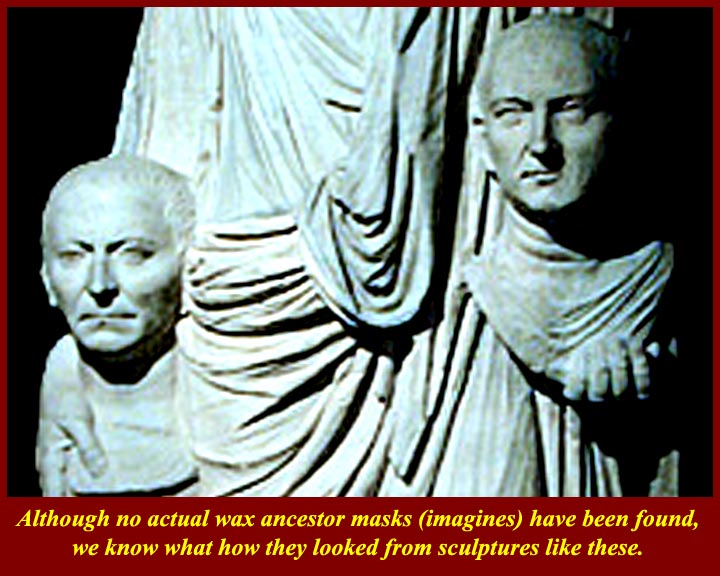
http://www.mmdtkw.org/AU0109aPatricianStatue.jpg
http://www.mmdtkw.org/AU0109bImagines.jpg
Ancient Romans worshiped their ancestors and upper class
Romans made
wax masks (called imagines) of any famous ancestors.
The masks
were kept in a special cabinet in the the atrium of their
Roman domus
and were displayed before visitors and worn in ceremonial
processions. The wax masks deteriorated over the
centuries, but
we
do have a few statues showing patricians holding
imagines. Although there is definite
family
resemblance, the individuality of the masks
points to
portraiture.
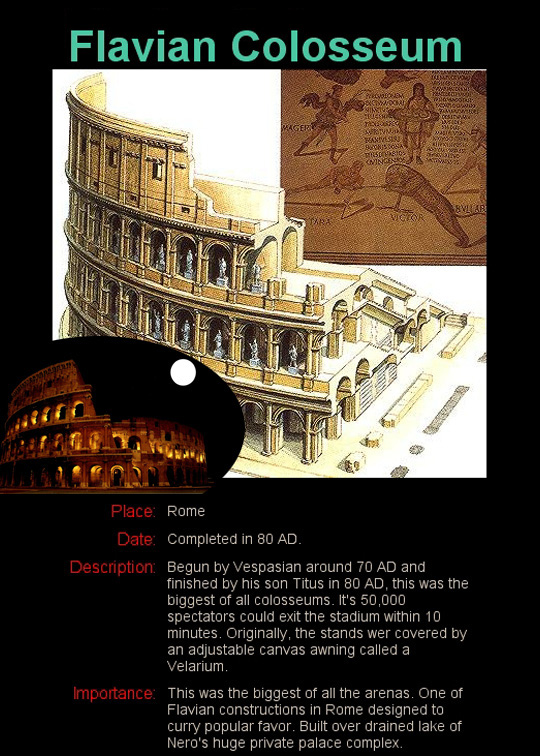
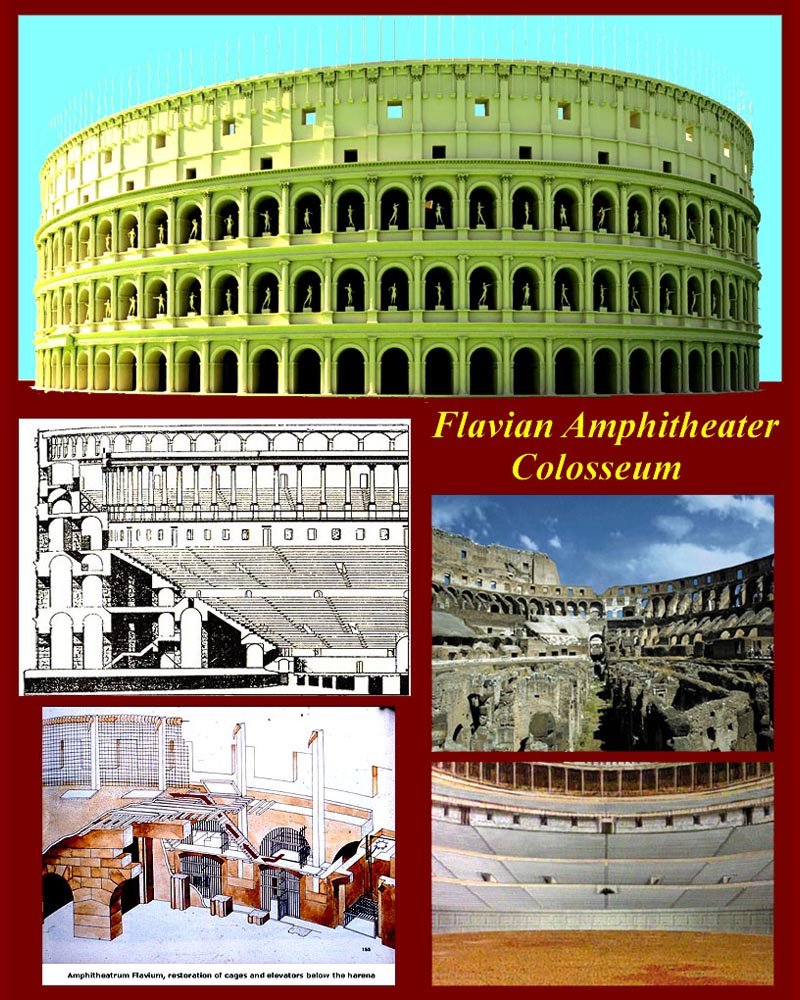
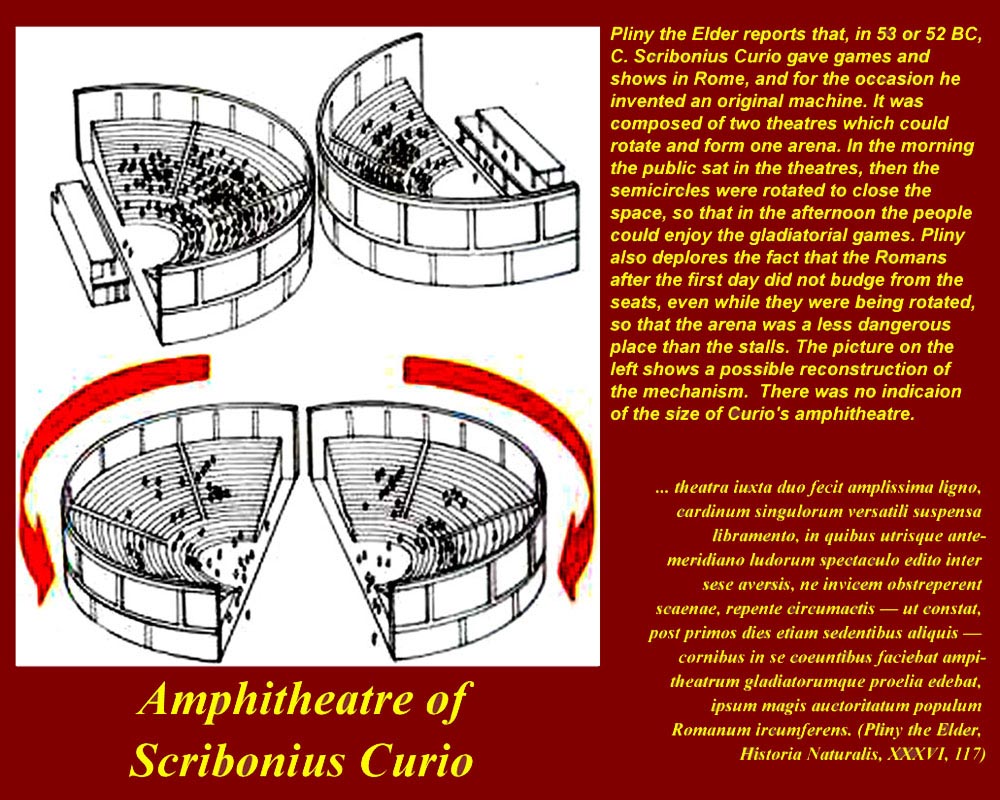
http://www.mmdtkw.org/AU0110aColosseum.jpg
http://www.mmdtkw.org/AU0110bColiseumSlide1.jpg
http://www.mmdtkw.org/AU0110cAmphitheaterScriboniusCurio.jpg
Without a doubt, the Colosseum is the most recognizable
Roman ruin. It
was known in ancient times as the Amphitheatrum Flavium
and didn't
acquire the Colosseum name until much later -- tenth
century AD
according to some authorities. The name Colosseum is
usually
thought to refer to the colossal statue of
Nero/Apollo/Constantine (at
various stages) that stood nearby. The Rome Colosseum is
the biggest
amphitheater built in ancient times. "Amphitheater"
is an ancient
portmanteau word that fuses "ambi" (both sides) and
"theatrum".
The first known stone amphitheater was in Pompeii (where
it can be seen
today, only having required minimal restoration after
excavation), but
earlier wooden structures were built in Rome -- and then
were
disassembled after the games (ludi circenses) were
finished. The
first known and most remarkable of the wooden
amphitheaters in Rome was
built by Caius Scribonius Curio. Each side pivoted
separately; it opened and closed with the audience
aboard.
For more informationon the Colosseum, see http://www.the-colosseum.net/architecture/amphitheatrum-en.htm
and http://en.wikipedia.org/wiki/Colosseum.
And for information on
Curio's architectural wonder, see http://www.mmdtkw.org/RT04-ColosseumRotation.html.
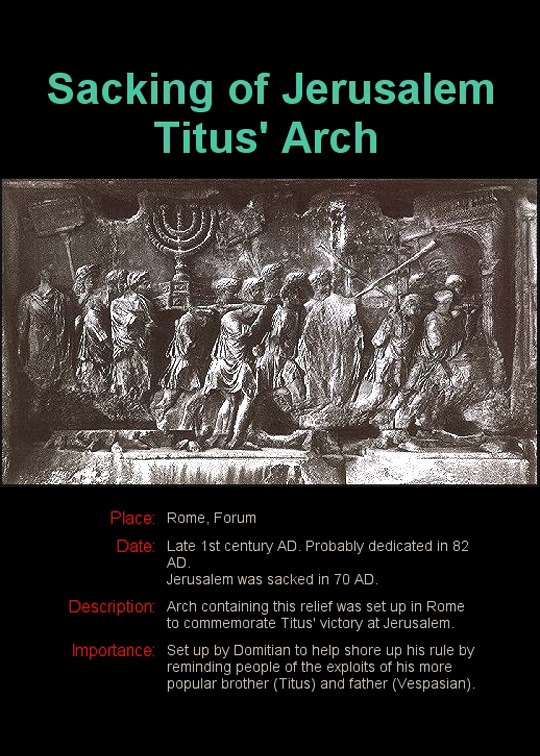
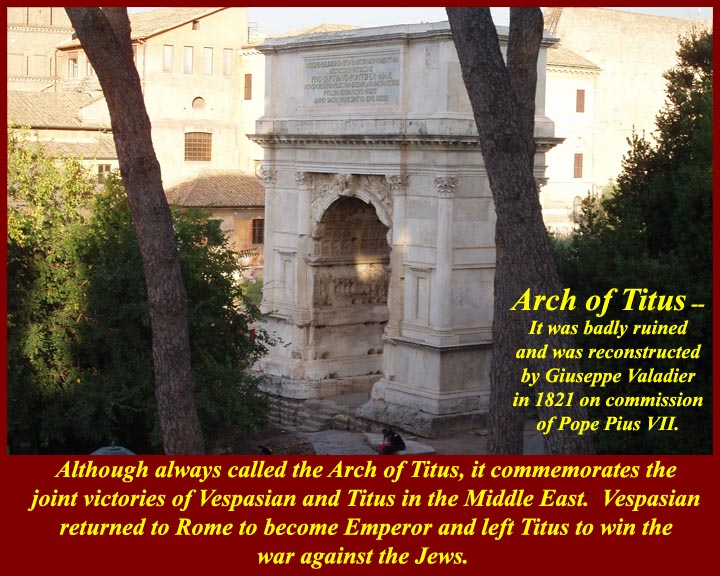
http://www.mmdtkw.org/AU0111aTitusArch.jpg
http://www.mmdtkw.org/AU0111bArchTitus.jpg
Stone triumphal arches were built well after the triumphs
which they
commemorated and replaced wooden arches which spanned the
routes of
triumphal processions. The arch of Titus, pictured,
was badly
dilapidated (literally,
many
stones missing) until it was restored
during the pontificate of Pope Pius VII by Giuseppe
Valadier in 1821.
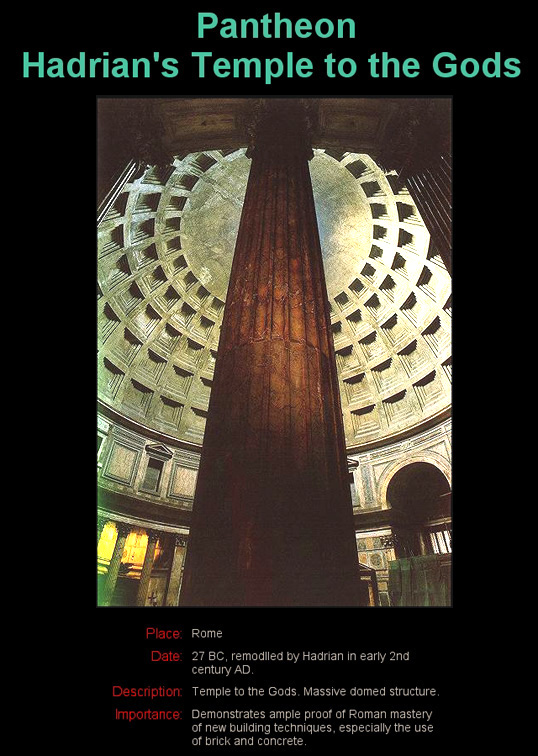
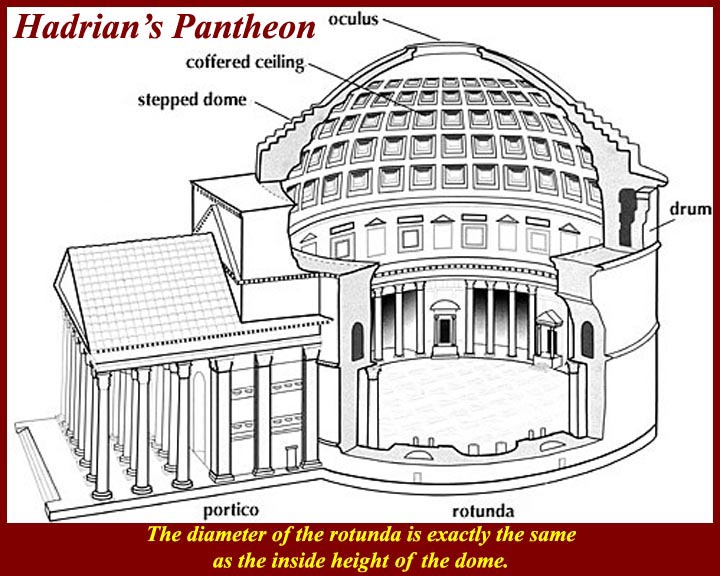
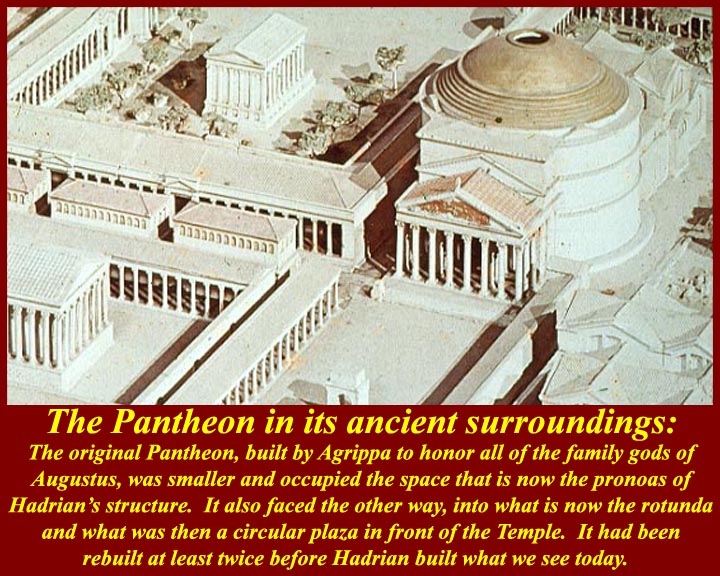
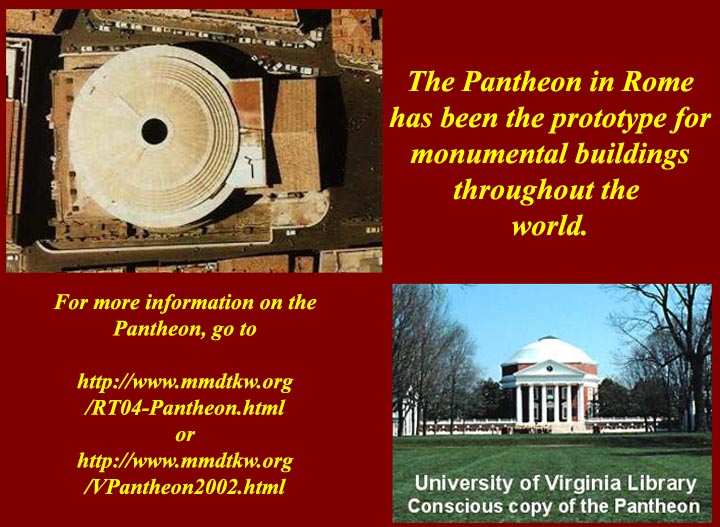
http://www.mmdtkw.org/AU0112aPantheon.jpg
http://www.mmdtkw.org/AU0112bPantheonSphereholder.jpg
http://www.mmdtkw.org/AU0112cPantheonModel.jpg
http://www.mmdtkw.org/AU0112dPantheonUVALibrary.jpg
Marcus Agrippa, the erstwhile General/Admiral, and
commander in Chief
of the forces of Augustus in the wars that put him in
power, then
became the chief contractor/builder of Augustine
Rome. He built
Rome's first Pantheon, which was not sacred to all the
gods of Rome but
rather to all the gods associated with the "Julian" family
of
Augustus. That structure occupied just the front
porch of the
current structure which was build by Hadrian.
Hadrian's pantheon
is still the largest unreinforced concrete dome in the
world. One
of the most remarkable facts about the Pantheon is that it
was made
with one continuous pour of concrete. For more
information about
the Pantheon, see http://www.mmdtkw.org/RT04-Pantheon.html.
Jefferson
designed the Rotunda (Library) at the University of
Virginia
to emulate the pantheon, and if you go down Constitution
Avenue in Washington DC you can see several buildings with
domes modeled on the Rome Pantheon dome..
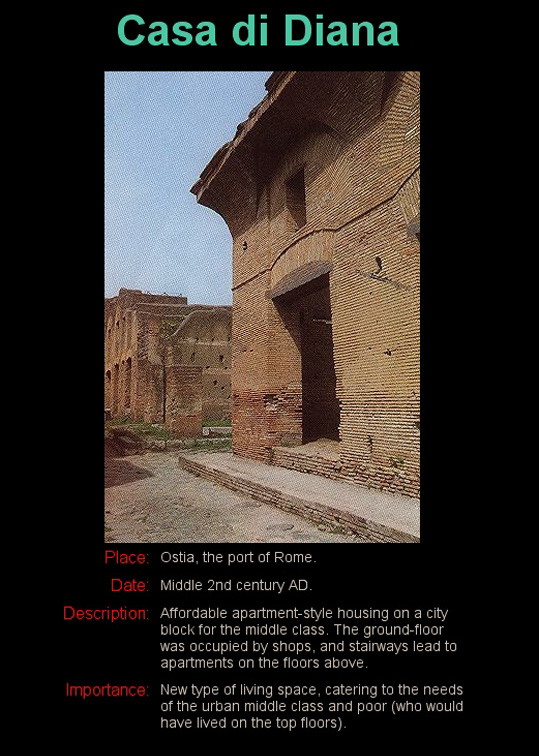
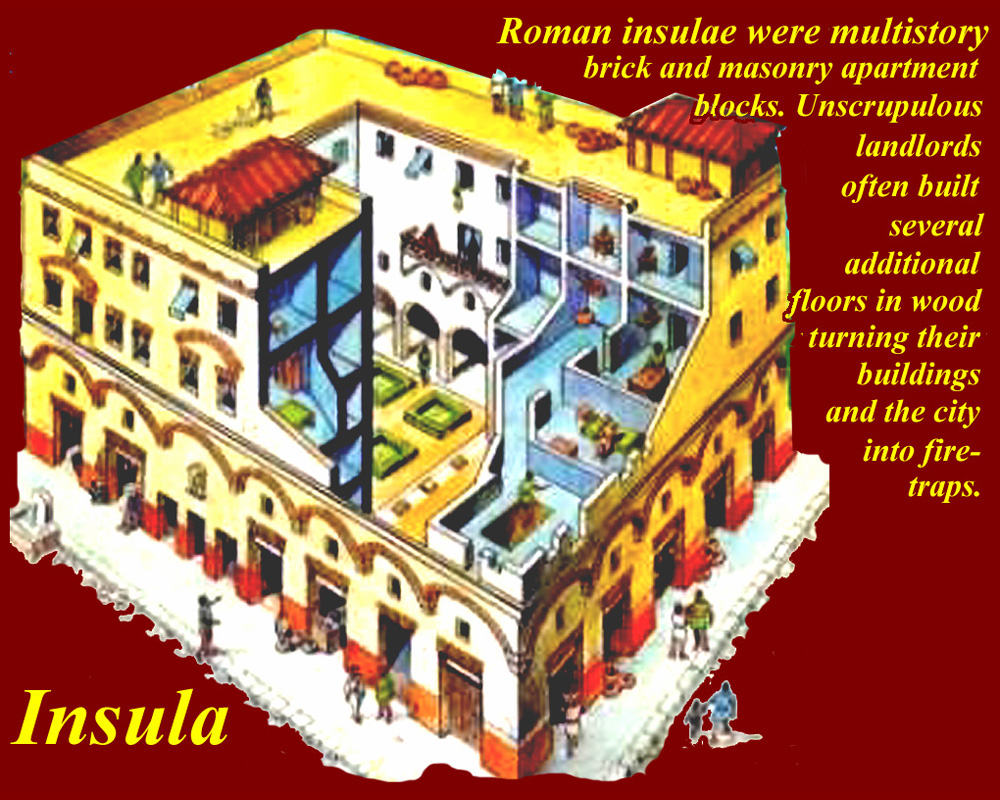
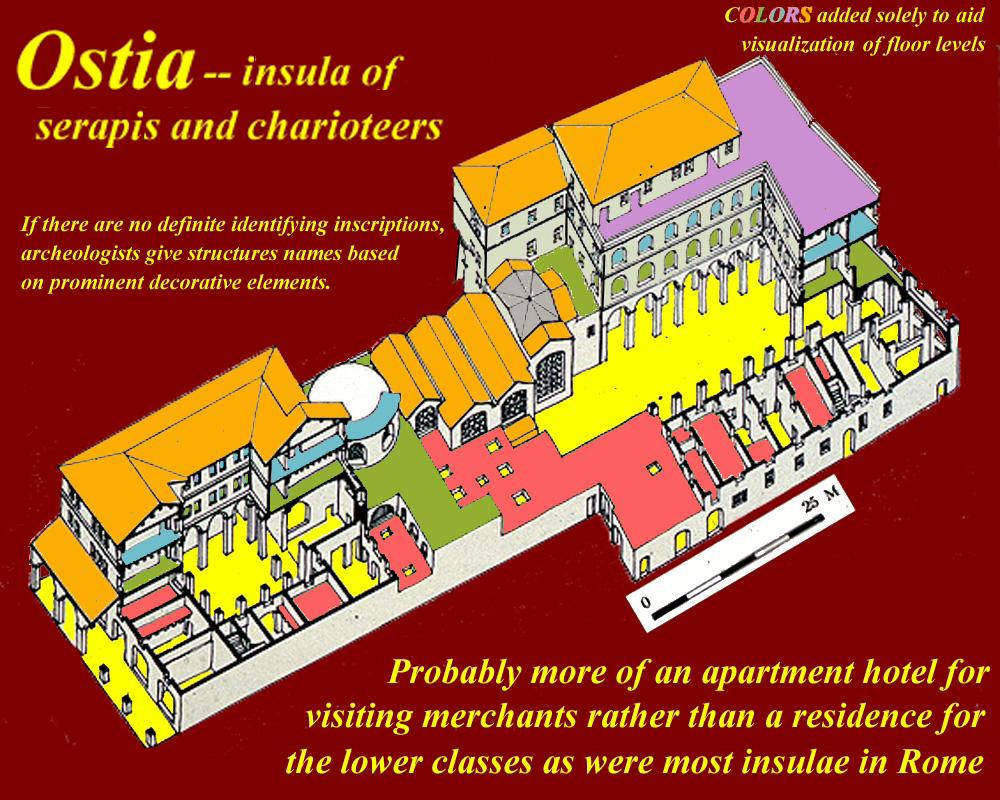
http://www.mmdtkw.org/AU0113aaaaOstiaInsula.jpg
http://www.mmdtkw.org/AU0113aaaInsula.jpg
http://www.mmdtkw.org/AU0113aaOstiaInsulaOfSerapis-Chario.jpg
The Latin word insula meant island, but it also meant an
apartment
block (except in Pompeii and surrounding towns, where
archeologists
inexplicably called every city block and insula).
These are
apartment block insulae. Most Romans lived in
apartment
insulae. The insula in the third image is thought to
be a
specialized apartment hotel for merchants doing temporary
business in
Rome's port, Ostia.
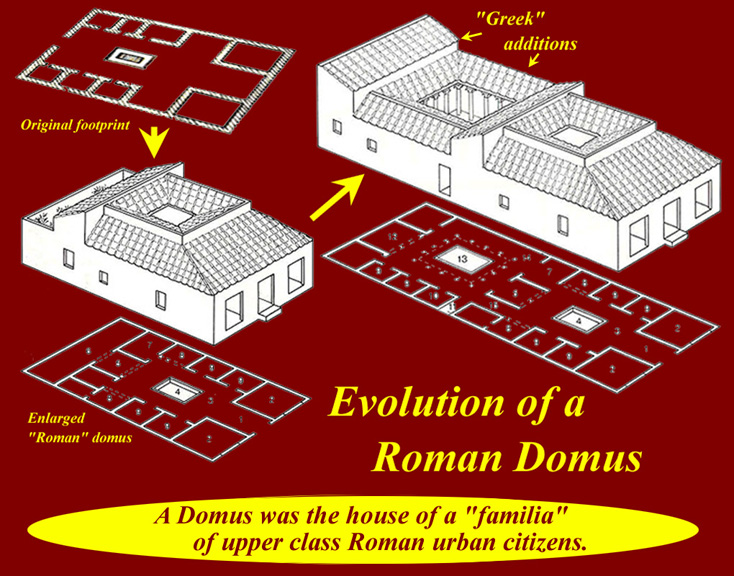
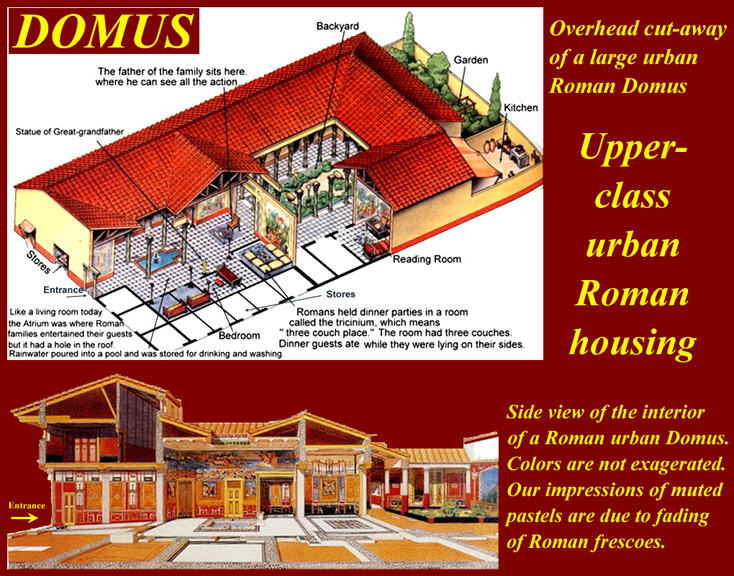
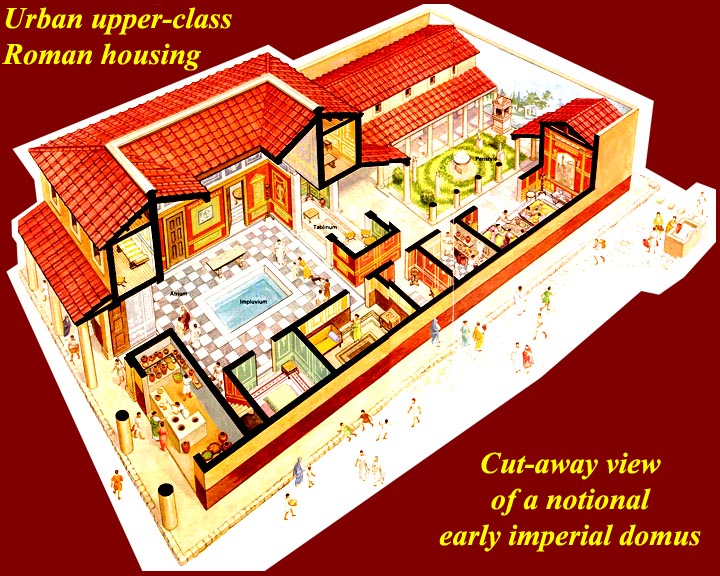
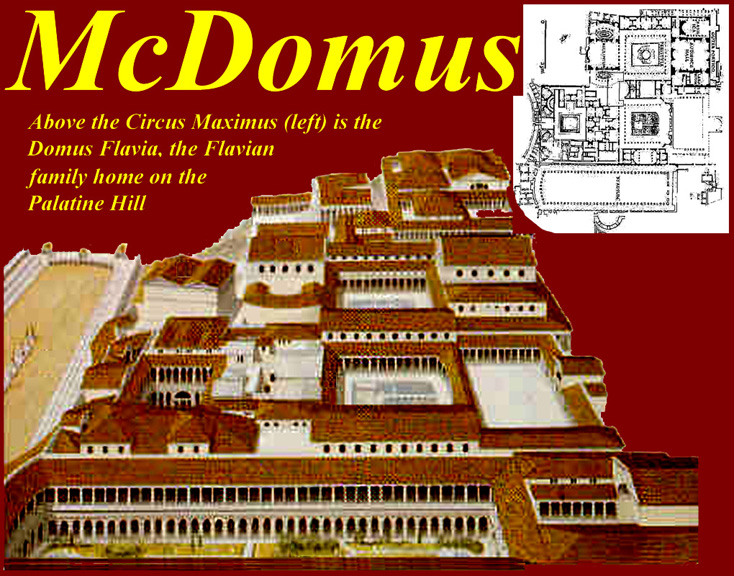
http://www.mmdtkw.org/AU0113aDomusEvolves.jpg
http://www.mmdtkw.org/AU0113bRomanDomus.jpg
http://www.mmdtkw.org/AU0113cRomanDomus.jpg
http://www.mmdtkw.org/AU0113dDomusFlavia.jpg
Anyone who accumulated enough money would buy a
domus. If there
was room, expansion was always a possibility as owner
became more
wealthy -- or a bigger domus might be bought or two (or
more) adjoining
domi might be combined into a McDomus.
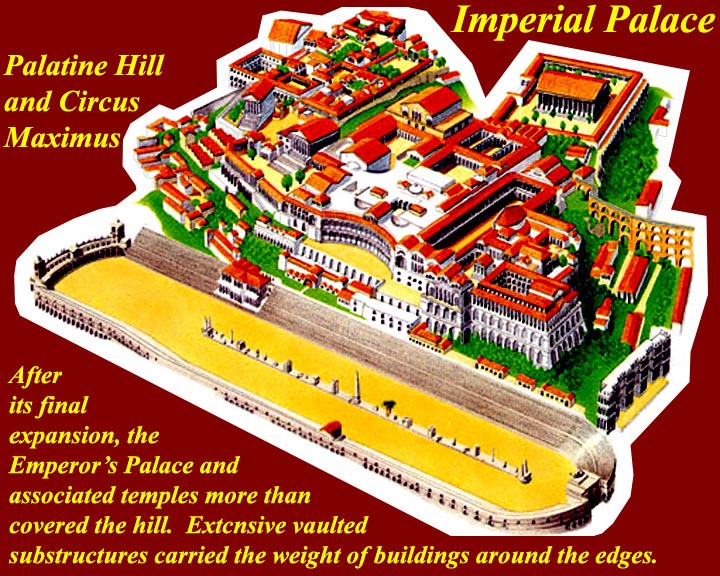
http://www.mmdtkw.org/AU0113eeeImperialPalace.jpg
The biggest domus in
Rome: Domitian
expanded the palace on he Palatine adding the large
section to the
right of the internal horse ring. To do this, he had
to extend
the side of the hill by building large vaulted structures
to support
his new buildings.
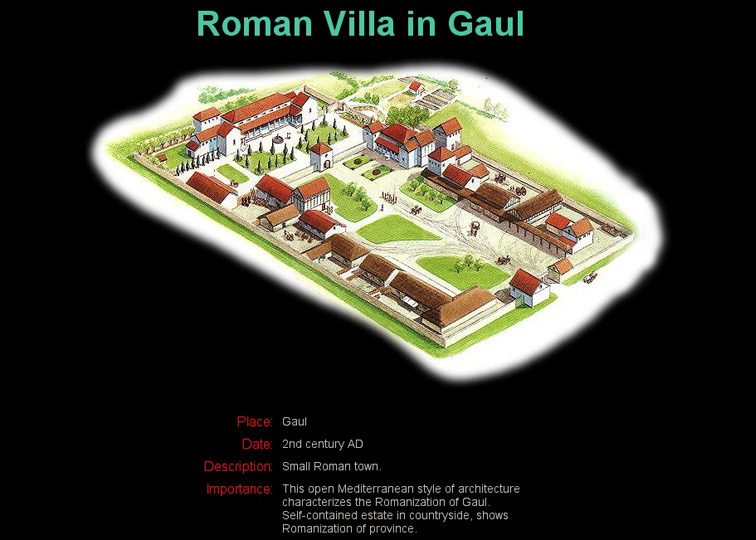
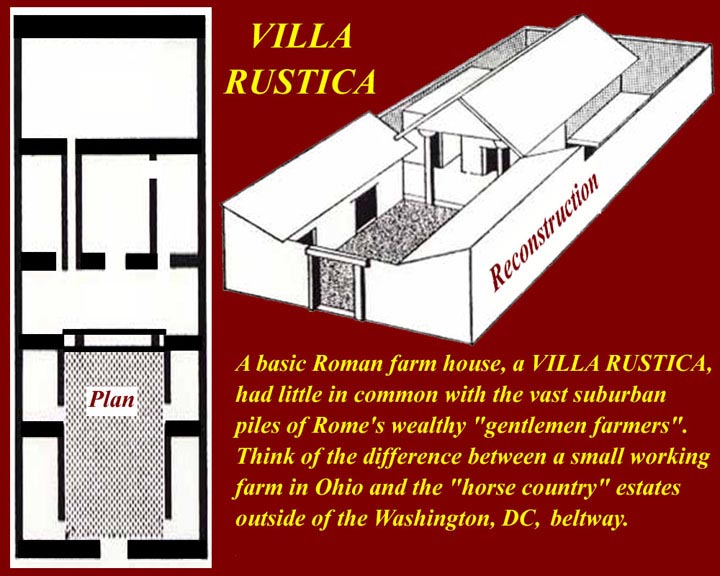
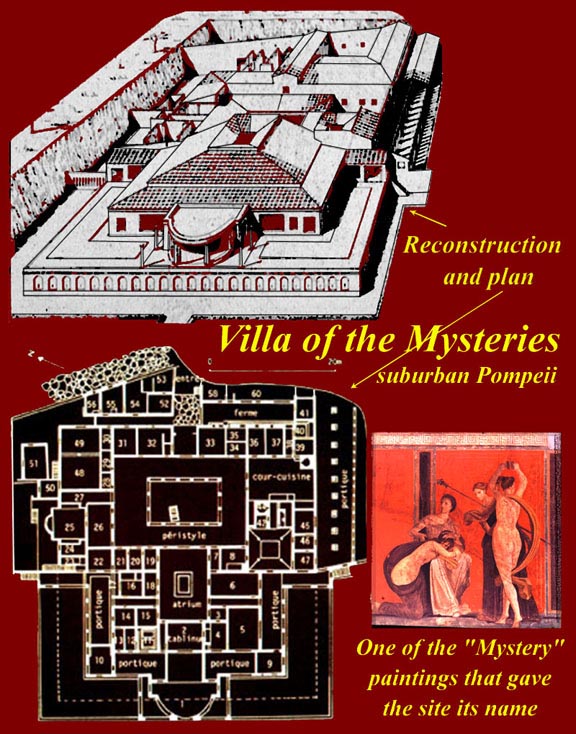
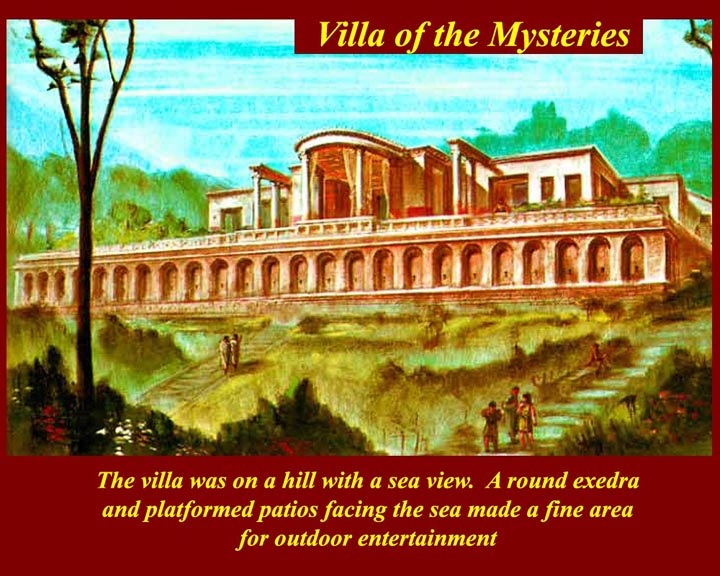
http://www.mmdtkw.org/AU0113eeRuralVilla.jpg
http://www.mmdtkw.org/AU0113eVillaRustica.jpg
http://www.mmdtkw.org/AU0113fVillaMysteries.jpg
http://www.mmdtkw.org/AU0113gVillaMysteriesElav.jpg
Rural villas -- working farms with quarters for the owner
-- could be
quite plush (first image) or very simple (second). Really rich folks might
also own a suburban villa in addition to their big domus
in the
city.
Some
"suburban"
villas, like the Villa of the Mysteries outside Pompeii
were palatial,
although they still might be agricultural centers; the
Villa of the
Mysteries, for example, included a large winery and the
owners probably
owned Vesuvian vineyards.
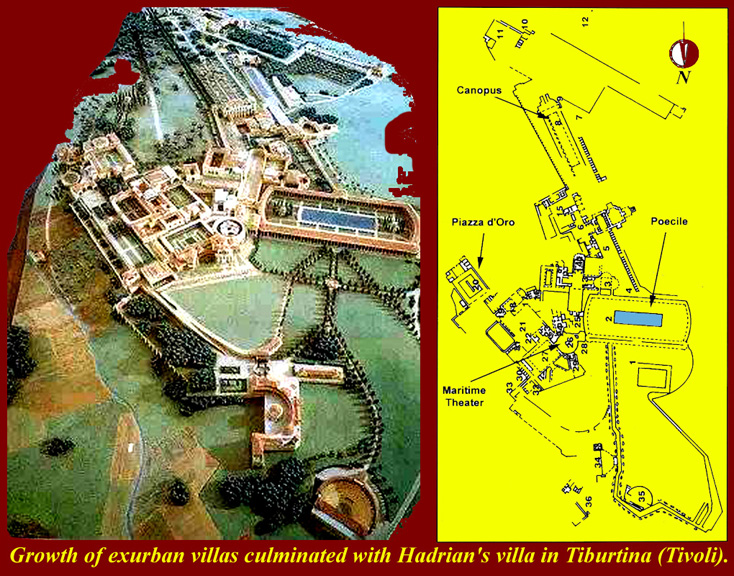
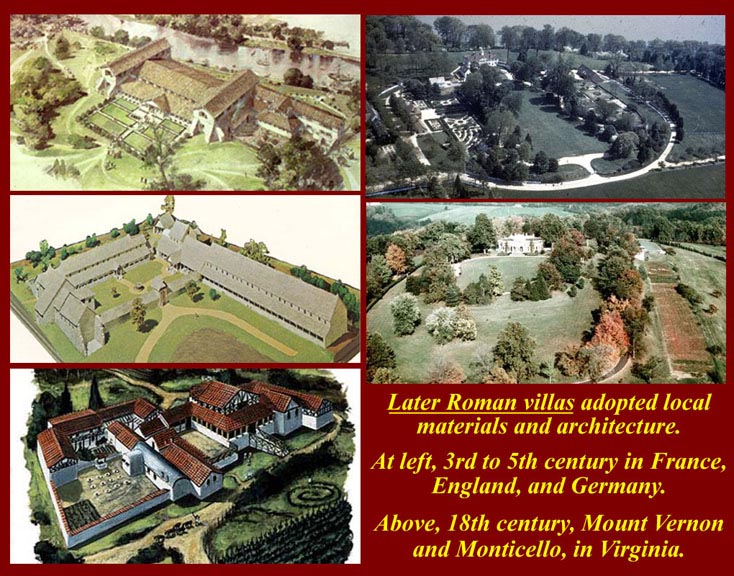
http://www.mmdtkw.org/AU0113hVillaHadrianTivoli.jpg
http://www.mmdtkw.org/AU0113iLaterRomanVillas.jpg
The biggest known suburban villa was the Villa Adrian in
Tiburtina
(modern Tivoli) in the hills east of Rome, The model
of Hadrian's
villa, in the first image, shows that it was more like a
small town
than a country house. on fact, recent excavations have
uncovered more
buildings to the upper right of the (i.e., southwest) of
the model and
site plan (-- both the model and plan have North to the
bottom). The second image shows Roman style villas
in other
parts of the empire and Mt. Vernon and Monticello, two
18th century
Virginia estates modeled on large Roman villas.
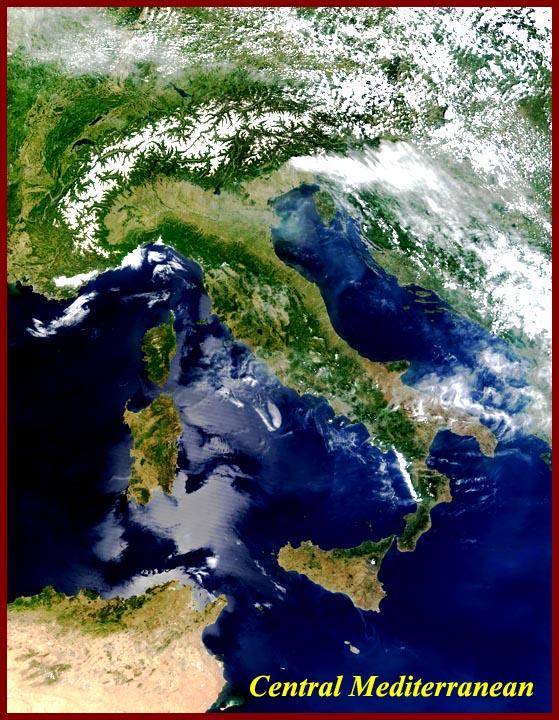
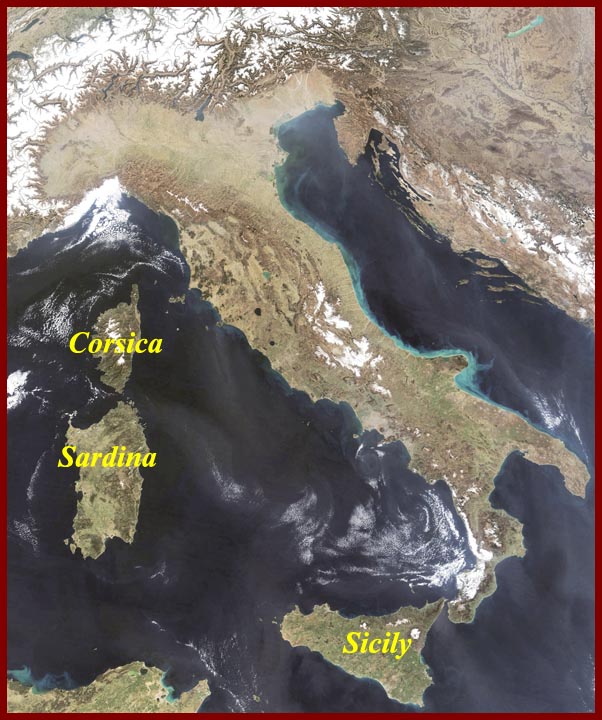
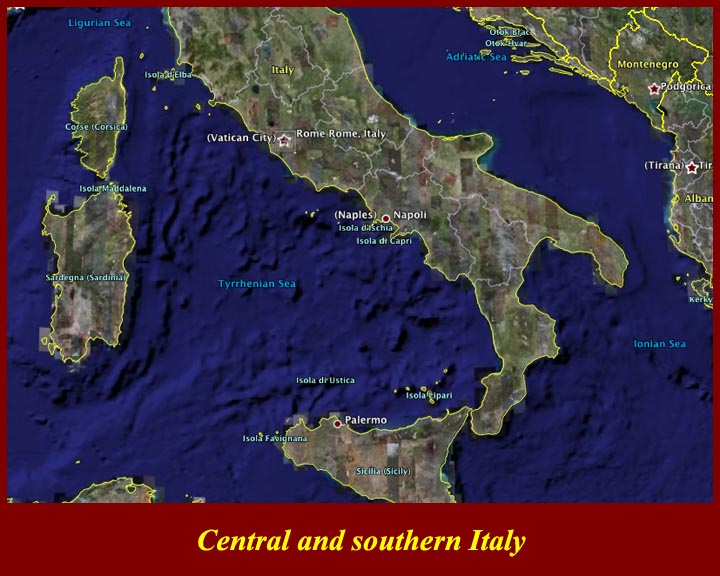
http://www.mmdtkw.org/AU0114aCentralMediterranean.jpg
http://www.mmdtkw.org/AU0114bItalySat.jpg
http://www.mmdtkw.org/AU0114cItalyCentralSouthern.jpg
Location! Location! Location! Central Mediterranean
-- notice
the small pinch point between Sicily and Tunisia.
Whoever
controls Sicily controls trade between the aestern and
western ends of
the Med. This, of course, is what the Punic Wars were
about.
Sicily and Sardinia also eventually be came bones of
contention between
the Romans and Carthaginians. But before any of that
could
happen, Rome had to take over everything to its south on
the Italian peninsula
itself.
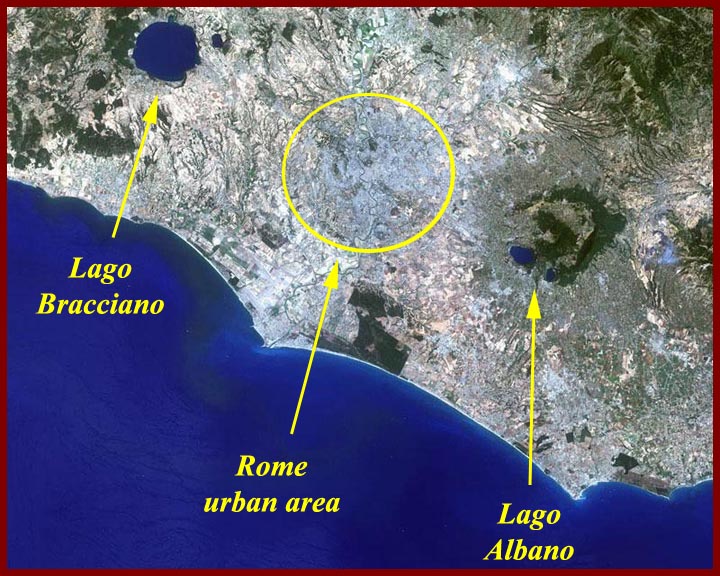
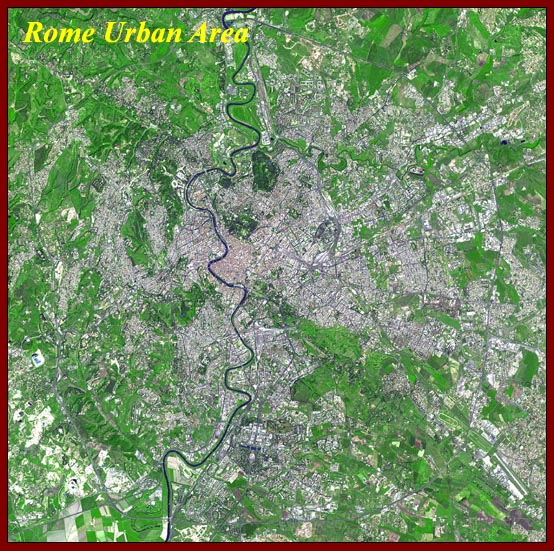
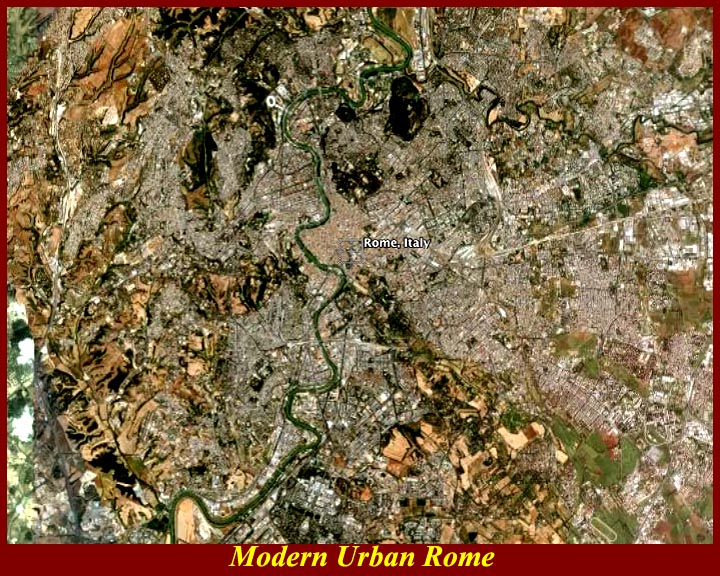
http://www.mmdtkw.org/AU0114dRomeUrbanArea.jpg
http://www.mmdtkw.org/AU0114eUrbanRome.jpg
http://www.mmdtkw.org/AU0114fModernUrbanRome.jpg
Rome sits in a low gap in the volcanic tuffa hills that,
milenia ago,
was eroded by what became the Tiber River -- note the two
big crater
lakes, Lago Bracciano to the northwest and Lago Albano to
the
southeast of Rome. According to ancient Roman
legend, Romulus and Remus
floated down the Anio River from the Alban hills and then
into the
Tiber and were found at the sight where Romulus later
founded
Rome. Rome is as far up the Tiber as small Roman
ships could go.
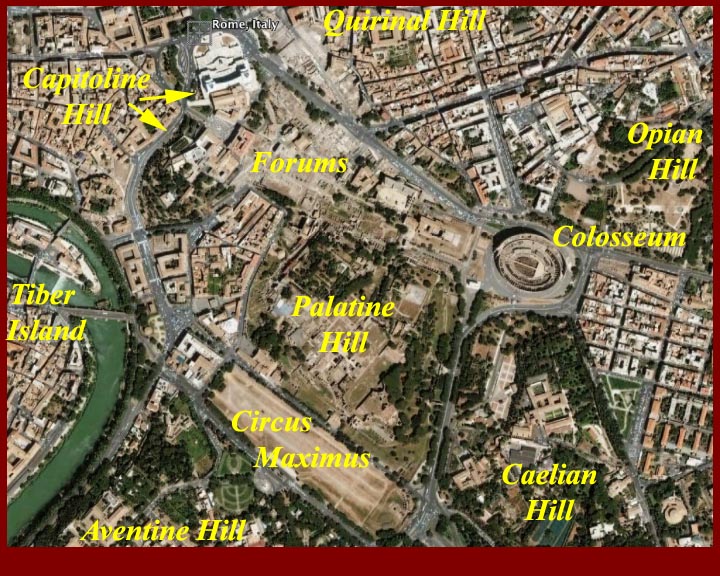
http://www.mmdtkw.org/AU0114gCentroStorico.jpg
The center of government, business and social activity of
ancient Rome
and of tourist activity in modern Rome, the forums are the
largest
active archeological dig in the world.
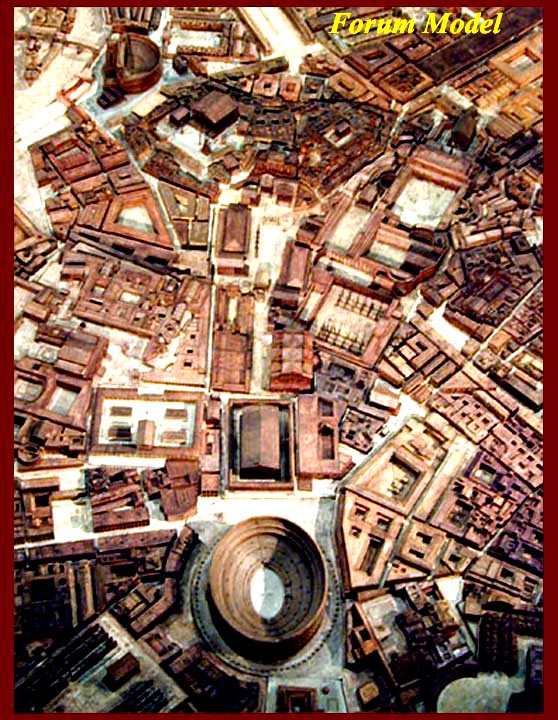
http://www.mmdtkw.org/AU0114hForumModel.jpg
A model showing the Roman forums at the time of
Constantine (ca.320 AD).
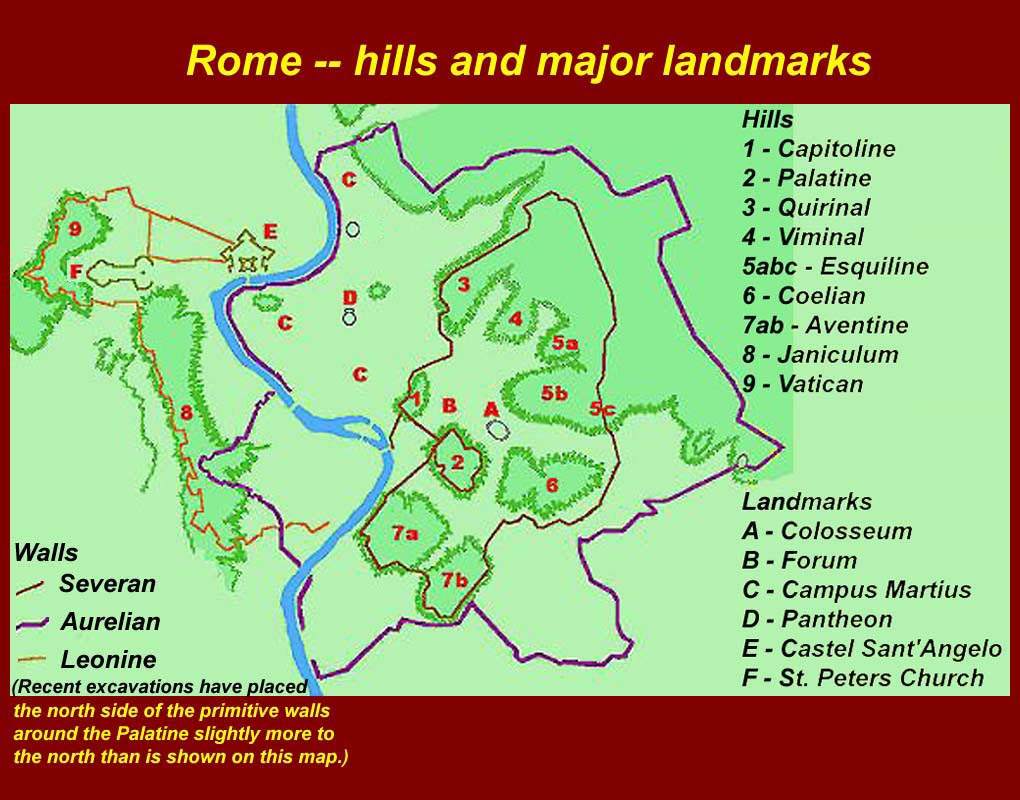
http://www.mmdtkw.org/AU0115aRomaPomeria.jpg
The boundaries of ancient Rome were defined by defensive
ramparts and
walls, although it sometimes took some time for the walls
to catch up
with the expansion of the boundaries -- i.e., the
"pomeria" or sacred
boundaries might expand, but the walls might be built
later in response
to a perceived threat. The smallest and earliest
defensive works
surrounded the small part of the Palatine where the first
settlement
was defined by Romulus (753 BC). The largest set of
walls, still
standing today, are the Aurelian walls.
The Aurelian walls were started by Aurelian in 271 AD in
response to
temporary barbarian successes in northern Italy and
finished by his
successor, Probus, in 275 AD. They were doubled in
height and
thickness by Maxentius from 306 to 312 AD in response to
the looming
threat of the arrival his rival, Constantine.
Maxentius then made
the silly decision to march his legions out of the well
fortified city
to Saxa Rubra, several miles to the north of Rome, where
he was roundly
defeated. In his retreat back to Rome, his remaining
forces were
caught at the bottleneck of the Milvian Bridge where they
and Max were
wiped out. This was a trivial event, but it had
major and well
known historical ramifications.
(Modern military strategists disagree on whether Maxentius
really would
have been able to defend the walled city against the
hardened troops
that Constantine had marched down from England. More
on this in a
later unit.)
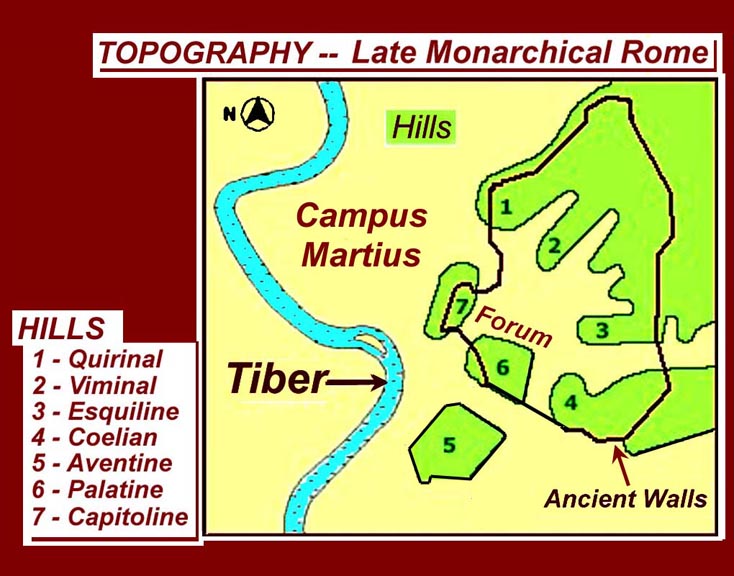
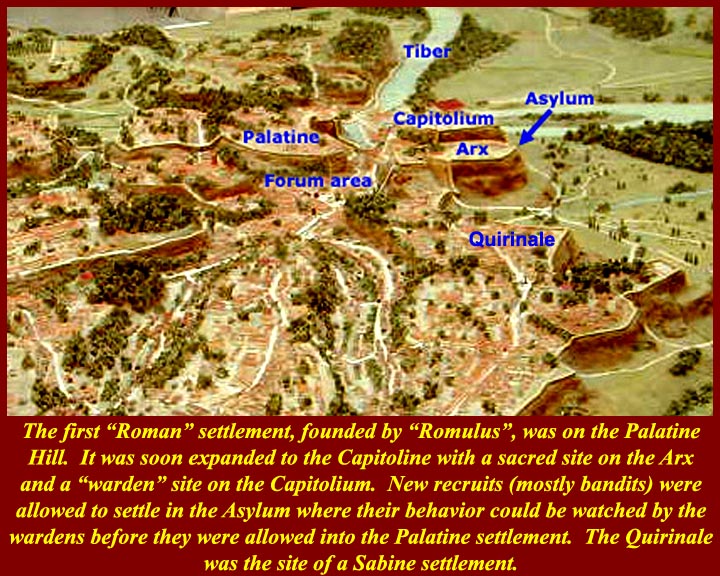
http://www.mmdtkw.org/AU0115bRomeHills.jpg
http://www.mmdtkw.org/AU0116aArchaicRome1.jpg
Rome was built on seven hills. Three of them were
free standing
(and were called "monti", i.e., hills) and four were were
the result of
water erosion of the higher area to the east (and were
called "colli",
i.e., ridges). The first stage of the "Severan"
walls did not
include the Aventine hill, and throughout the ancient
period, the
Aventine was considered to be outside the pomeria and a
place where
foreigners could live and build their temples. The
campus martius
was also outside the pomeria and, as its name states, it
was the
location of military musters and demobilizations.
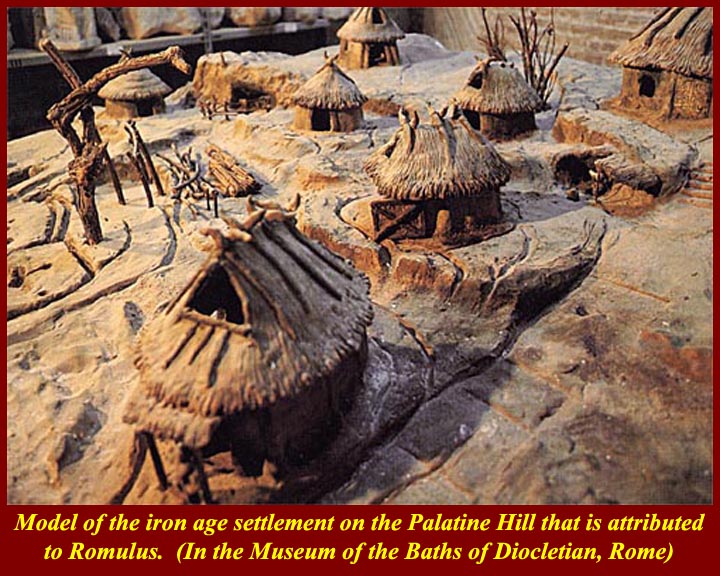
http://www.mmdtkw.org/AU0116bRomulusHuts.jpg
The Italian National Museum in the remains of the Baths of
Diocletian
displays this model based on archeological remains on the
Palatine hill
that date from the supposed time of Romulus (mid-8th
century BC.
The actual dig on the Palatine can be seen today, but work
is still
under way and the dig site is fragile, so tourists can not
actually
enter the fenced-in site. The whole story of Romulus
and Remus
and the founding of Rome did not become the canonical
Roman founding
myth until the the time of Augustus when Virgil wrote his
Aeneid to
glorify the Julian gens, but this particular legend
undoubtedly was
floated long before then. For a short run through of
Rome's
founding myth according to Virgil, see http://www.mmdtkw.org/VFoundMyths.html
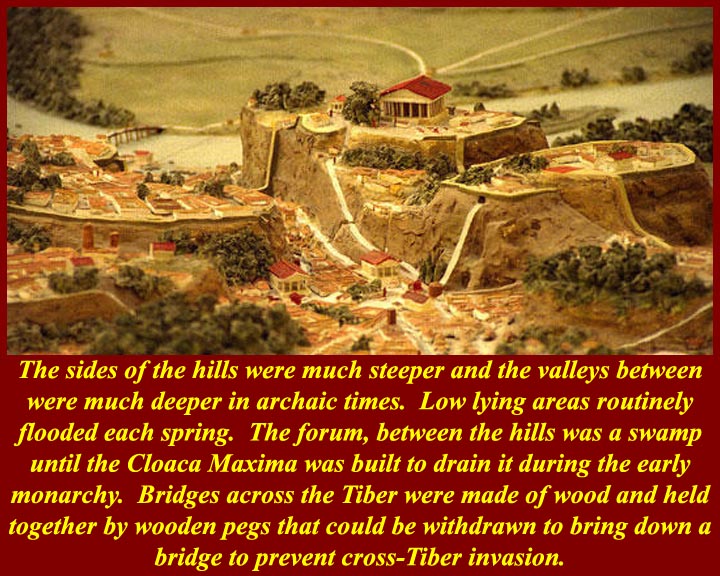
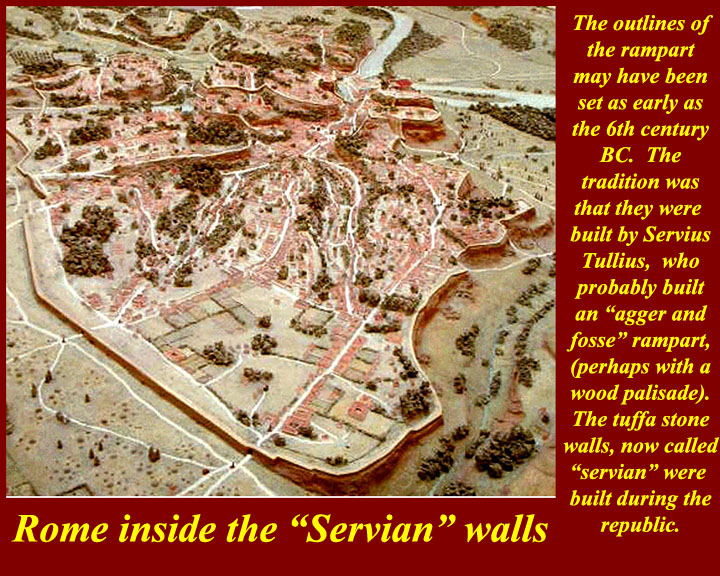
http://www.mmdtkw.org/AU0116cArchaicRome2.jpg
http://www.mmdtkw.org/AU0116dRomAntico.jpg
The Palatine and Capitolie hills during the Republic and a
wider view
of the republican city.
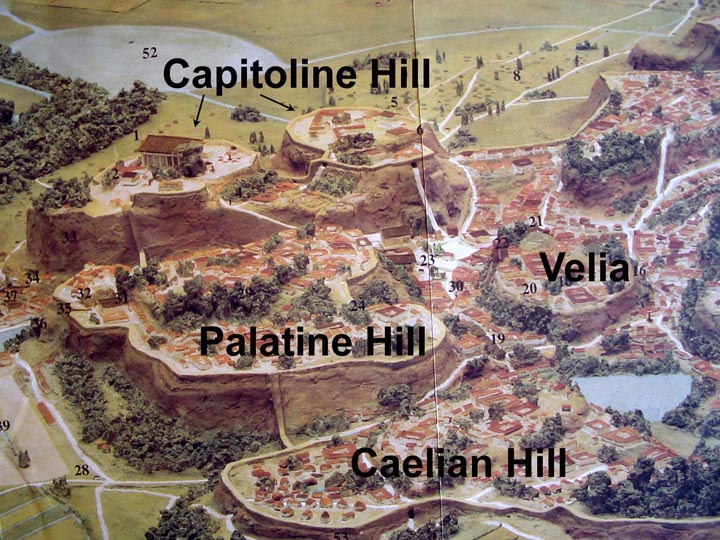
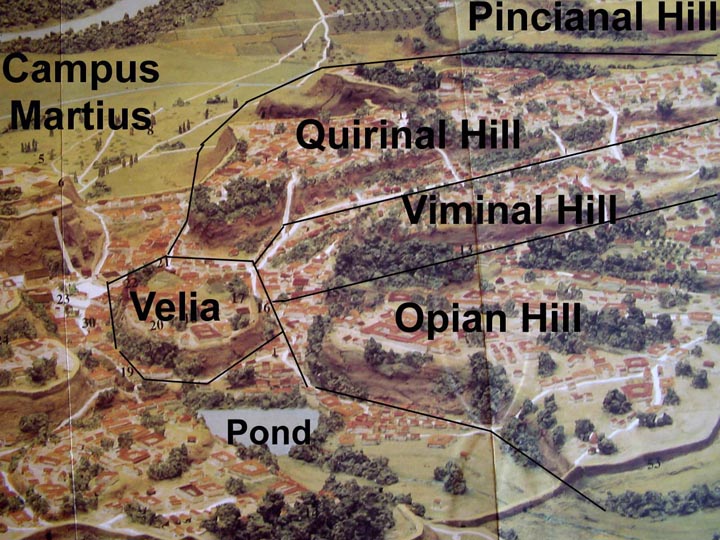
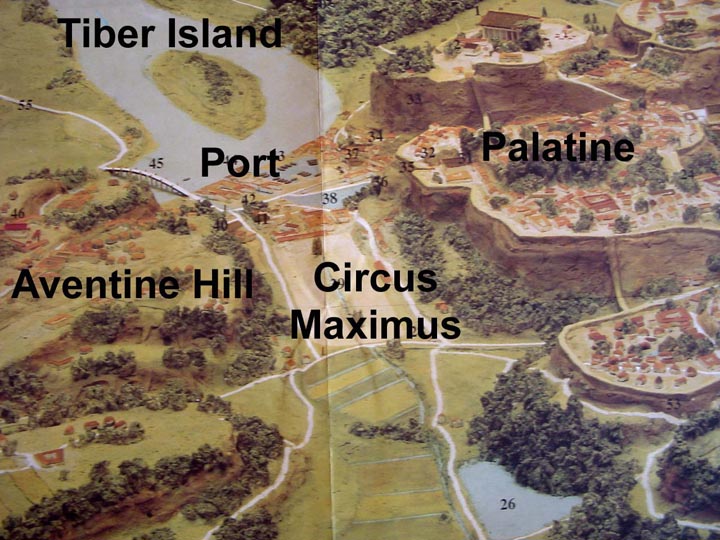
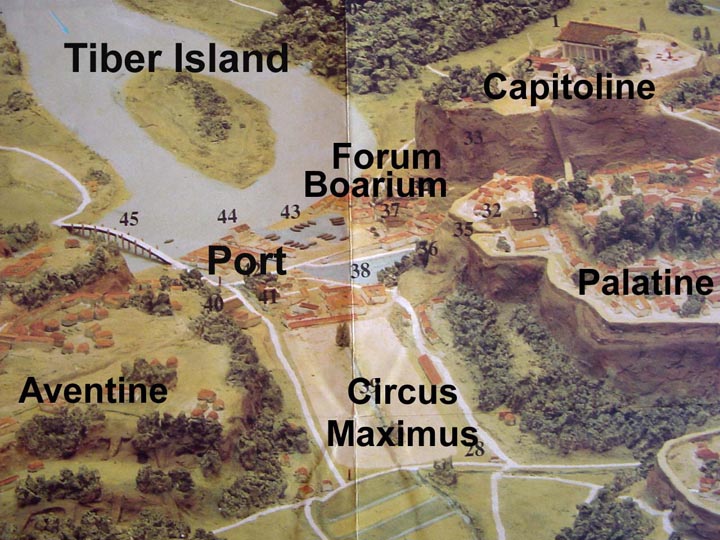
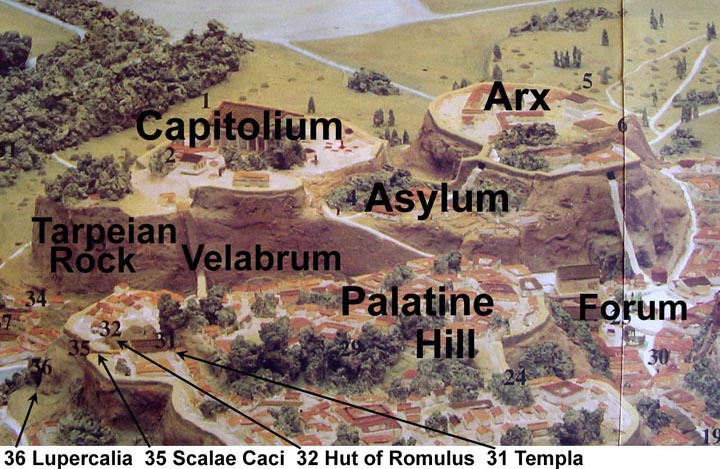
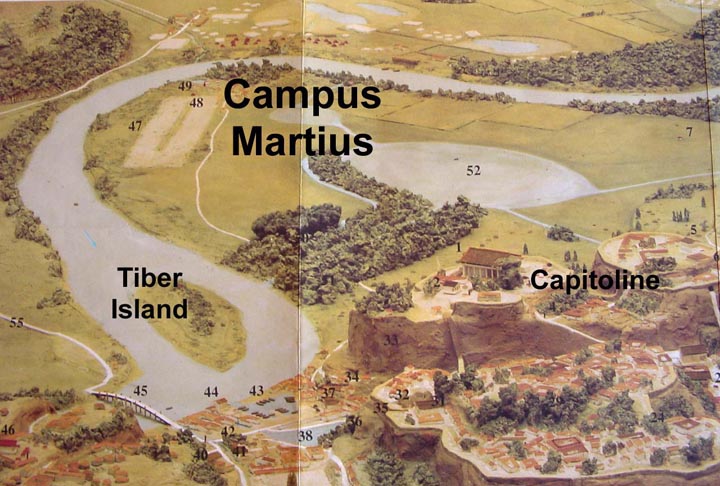
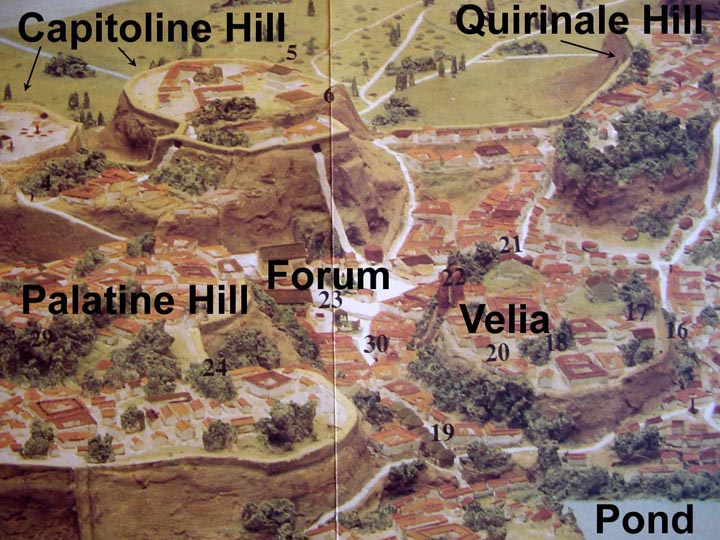
http://www.mmdtkw.org/AU0117PalCapCael.JPG
http://www.mmdtkw.org/AU0118QuirVimOpi.JPG
http://www.mmdtkw.org/AU0119CircMax.JPG
http://www.mmdtkw.org/AU0120PortForBoar.JPG
http://www.mmdtkw.org/AU0121Capitoline.JPG
http://www.mmdtkw.org/AU0122CampMar.JPG
http://www.mmdtkw.org/AU0123Forum1.JPG
Annotated photos of parts of a tourist map of ancient
Rome.




















































































